Undavalli is located six kilometers away from Vijayawada and around 22 kms north-west of Guntur. . This is in the southwest direction of Vijayawada. Undavalli is in Tadepalli Mandal of Guntur district. This is one of the ancient and historical villages in Andhra Pradesh.
What to see in Undavalli
Undavalli Caves: The caves have four storeys. These caves were used as restrooms by Buddhist monks in rainy season. River Krishna appears beautifully from this hill. We can see the caves here that are believed to be built by Vishnukundina kings during the period of 420 – 620 AD. These caves are hewn out of rocks. The architecture and the sculptures of the cave temple, attract the tourists.
Sri Anantha Padmanabha Swamy temple is the special attraction of Undavalli Caves. There is a big statue of Ananatasayana Vishnu in reclining position made out of single block of black granite. There are temples of other deities also in the rock cut caves.
What to see around Undavalli
Guntur: Guntur is 22 kms away from Undavalli caves. There are many attractions such as temples, parks and churches in Guntur.
Amaravathi: this is 16 miles away from Guntur and is one of the popular religious places and also Buddhist destination. There is a temple dedicated to Lord Shiva here.
Bhattiprolu: this is 20 kms away from Guntur and this is also one of the popular Buddhist destinations.
Vijayawada: This is one of the largest cites of Andhra Pradesh and there are many tourist interests in this city such as Gandhi Hill, Kanaka Durga Temple, Bhavani Island, Kondapalli Fort and many more.
Getting to Undavalli: Number of buses run to Vijayawada and Guntur cities from all corners of Andhra Pradesh and from here local transport can be hired to reach Undavalli. Vijayawada is also well connected by train and aeroplane. Another way to reach Undavalli is to get into a bus from Mangalagiri.
Getting Around Undavalli: Local transport can be hired to look around Undavalli. Tourists also prefer to walk to enjoy the nature here. We can see large numbers of them walking on the Shore of Krishna River.
Best Time to visit Undavalli: The climate here is pleasant in winter but very hot in summer season. Best time to visit the place is between October and February.
Where to stay at Undavalli: Though Undavalli is located in Guntur district, the village is very near to Vijayawada. Vijayawada has many hotels from five star hotels to budget hotels to suit the needs of every tourist.
Where to eat at Undavalli: Tourists prefer eating at Vijayawada as Undavalli is a small village and there are not many hotels that offer decent food. Vijayawada is known for its special Andhra Cuisine including the spicy pickles and veg and non veg varieties. There are many restaurants that offer delicious food.
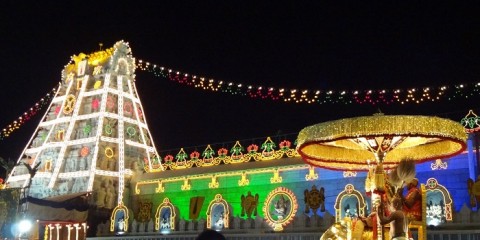
AP, South India, Adventurous sports, Architecture, Fort, History, Mountain Passes, Nature, Temple, Valley, Water falls, Wildlife Sanctuary
Chittoor is located in Chittoor district of Andhra Pradesh, India. In Andhra Pradesh it is the major town. It is situated in the valley of the Ponni River. During 8th and 9th century this place was ruled by Chola dynasty. Later it was ruled by Ballal dynasty followed by Vijaynagar kingdom. In 1640, East India Company entered into this place. This is one of the best places for natural lovers. It is popularly known as Ooty of Andhra.
What to see at Chittoor:
Nagari: This place is popular for Nagari hills. Mountaineering activities take place here. Highest cliff at this place is Nagari Nose. Shape of this nose looks like human nose. Famous temple at this place is Sri Desamma Vari. Devotees believe that by doing abhishekam eye problems of the will be cured.
Guntipalle: It is located 18kms away from Chittoor. Rock pillar is the major attraction of this place. This is popularly known as Puligunda.
Kalavagunta: It is located 8kms away from the town chittoor. At the merging point of Ponnai and Aragonda this town is located. During the chola dynasty several temples were constructed at this place. Architecture of these temples is so beautiful. Most famous temples were Lakshminarayana Temple which is dedicated to Lord Vishnu and Mukkantisvara Temple which is dedicated to Lord Shiva.
Gurramkonda: It is located in Chittoor district. Gurramkonda fort is the major attraction of this place. This fort is 500 years old fort. Architecture is so beautiful. It is stated by the local people that rulers reach this place by using horse.
Mogili: It is located 25kms away from Chittoor. Mogileeswara Temple is the major attraction at this place. This temple is known as Dakshina Kailasam. Mogilliappa constructed this Lord Shiva Temple under Mogili tree.
Tirupati: This is the major attraction in Chittoor district. Lakhs of devotes come to this place. Lord Ventakeswara is worshipped here. Temple was built in 12th century. Pallava, Pandya and Chola architecture styles can be seen on this temple. Dome of this temple is fully gold plated. Papanasam waterfalls are another attraction of this place.
Vepanjeri village: It is located 15kms away from Chittoor. This village is famous for Sri Lakshmi Narayana Swamy Temple. Temple was built between 1178 and 1218. Pallava Style of architecture can be seen here.
Pulicat Lake: This place is most famous among bird watchers. Plenty of migratory birds come to this place. This lake is separated from Bay of Bengal.
Kaundinya Wildlife sanctuary: It is located 60kms away from Chittoor. It is surrounded by hills and valleys. Large number of elephants lives at this place. Other animals along with elephants are jackals, hares etc. Huge collection of flora and fauna can be seen here.
What to see around Chittoor:
Ramgiri: This is located few kilometres away from chittoor district. It is believed that this is the home place for Lord Bhairava. Several ancient temples located here. At the foot of the hill Lord Shiva temple is located. Lord Muruga temple is also situated on the top of the hill. Near these temples tank is situated. Water which flow from top of the mountain attracts several tourists.
Getting to Chittoor: Chittoor is well connected with road and railways. From Vellore, Visakhapatnam, Coimbatore, Pondicherry, Pune, Vijayawada, Chennai etc buses come to this place. From Kolkata, Mumbai, Varanasi, Chandigarh etc trains come to this place. Nearest airport is located at Trisulam which is 15kms away from chittoor.
Getting around Chittoor: Buses, taxis, private cabs are available to visit the surrounding places of Chittoor.
Best time to visit Chittoor: Best time to visit this place is February, September, October, November and December.
Where to stay at Chittoor: Plenty of accommodations starting from budget to luxury hotels are available to stay at Chittoor. Best hotels at this place are Sindhu Towers, Bans The Hotel, Bhaskara Hotel, Haritha Hotel.
Where to eat at Chittoor: Huge number of restaurants is available to have food at Chittoor.
Warangal is also well known as Orugallu. It is located in Andhra Pradesh, India. During the historical period this place acted as capital to Kakatiya kingdom. In 1687 this place was conquered by Aurangzeb, Mughal Emperor. This place is 4th largest city in Andhra Pradesh.
What to see at Warangal:
Thousand Pillared Temple: This is one of the major attractions of Warangal. In 1163, this was constructed by King Rudra Dev. Temple is famous for carved pillars. Lord Vishnu, Lord Shiva, Lord Surya carvings can be seen here.
Bhadrakali Temple: It was constructed in 8th century. Goddess Kali is worshipped here. Chalukya Style of architecture can be seen here. Deity can be seen with 8 hands.
Ramappa Lake: This was used by the Kakatiya rulers for the irrigation purpose. In 13th century, it was built by Ganapati Deva. Boating is the major attraction at this place. Near this place visitors can find Lord Shiva temple.
Warangal Fort: Fort was constructed in 13th century. This fort was famous for 4 large stone gateways, carved pillars and carved arches. During 13th century this fort was under the control of Rani Rudramma Devi. Inside the fort, visitors can see Swayambhudevi temple. This temple is dedicated to Mother Earth. Near this fort visitors can also see Khush Mahal which was constructed by Shittabh Khan.
Ramappa Temple: It was built in 12th century during kakatiya period. South Indian Architectural style can be seen here. Lord Shiva is worshipped here. Idol of Lord Shiva is place in star shaped platform. Idol is 6 feet high. Before the temple one can find 9feet long statue of Nandi. Walls of this temple say the stories of Ramayana and Mahabharata. Huge crowd can be seen during Shivaratri period.
Jain Mandir: This temple is famous for architectural work and intricate carvings. Lord Mahavira is worshipped here. Other Thirthankaras idols can also be seen here.
Other attractions of Warangal: Other attractions of Warangal are Padmakshi Temple, Kakatiya Rock Garden, Rayaparthy Shiva Temple, Musical Garden, and Someswara Temple
What to see around Warangal:
Hanamkonda: It is located 5kms away from Warangal. During the Kakatiya Dynasty this village was found by Hanumaiah and Kondaiah. This village is named after Hanuman Temple. When Hanuman was returning with the Sanjeevni Mountain few stones fell at the place where present Hanuman Temple was built.
Pakhal Lake: It is located 55kms away from Warangal. During 13th century this was built by Ganapati Deva, Kakatiya Ruler. It is surrounded by dense forest and hilly terrain. This place is home to several flora and fauna.
Sri Veeranarayana Temple: It is located in Kolanupaka Warangal district which is situated 71kms away from Warangal. Chalukya architectural style can be seen here. Lord Vishnu is worshipped here.
Other attractions near Warangal: Other attractions near Warangal are Govindarajula Gutta, Siddeshwara Temple, Pembarti Village, Ethunagaram Sanctuary, Ghanpur Group of Temples and Lakhnavaram Lake.
Getting to Warangal: Warangal is well connected with road and railways. Road way is well connected with Hyderabad, Bhopaklpatnam, Chhattisgarh etc. Rail route is well connected with Hyderabad, Chennai, Delhi, Kolkata, Vijayawada etc. Nearest airport is located at Hyderabad which is 160kms away from Warangal.
Getting around Warangal: Autos and Taxis are available to visit the surrounding places of Warangal.
Best time to visit Warangal: Best time to visit this place is throughout the year. But summer is too hot.
Where to stay at Warangal: Plenty of accommodations are available at this place. Apart from hotels, guest houses are also available to stay at this place. Best hotels are Asoka Hotel, Ratna Hotel, City grand Hotel.
Where to eat at Warangal: Several restaurants are available to have food at this place.
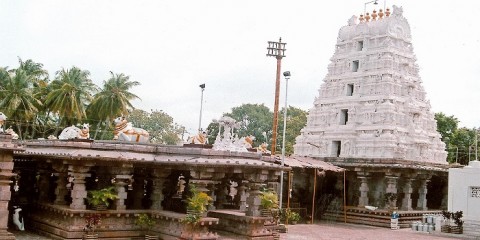
AP, South India, Architecture, Boating, Caves, History, Jyothirlinga, Mahabharata, Shakti peethas, Temple
Srisailam is located in Nallamala hills in Kurnool district, Andhra Pradesh, India. It is a popular weekend destination among the people. Major attraction of this place is Bhramaramba Mallikarjuna Swamy Temple. Other name of Srisailam is Srigiri, Sriparvata, and Mantharaparvata. In the epic Mahabharata, Srisailam was mentioned with the name Sri Parvata. Glory of Srisailam dates back to 12th century. At that time this place was famous for Vachana Sahitya and Sharana Movement. Adi Sankara visited this place. It is believed that Akka Mahadevi gained salvation in the caves of Srisailam. He was a Social reformer and Poet. Wildlife sanctuary is other attraction of this place.
What to see at Srisailam:
Srisailam Dam: It was constructed across River Krishna. Length of the dam is 512 meters. It is considered as one of the largest hydroelectricity power projects in India. This consists of 12 radial gate ways.
Mallikarjuna Swamy Temple: This is the major attraction of this place. King Harihara Raya built this temple around 6 centuries ago. It is one of the 12 Jyothirlingas in India. Lord Mallikarjuna is worshipped here. Vijayanagar Architecture style can be seen here. In Skandhapurana, Vyasa Maharshri discussed about this temple in detail.
Bhramaramba Devi Temple: Goddess Bhramaramba Devi is worshipped here. She is the incarnation of Goddess Parvati. It is the seat of Ashtadasa Mahasakthi Pithas. It is believed that this is the first sakthi of 18 sakthi Peethas. Temple is situated on the banks of River Krishna.
Hemareddy Mallareddy Temple: It is located half kilometre away from Mallikarjuna Temple. In 2010, it was constructed by Karnataka Veerashaiva Reddy Samaj. Adjacent to the temple an ashram can be seen.
Srisailam Sanctuary: This is other major attraction of this place. Area covered by this sanctuary is 3568Sq.Kms. Large variety of animals such as Pangolin, Jungle cat, Palm Civet, Sloth bear, Tiger, deer; Leopard etc can be seen here. It is dry delicious forest consists of Scrubs and bamboo thickets. Several Crocodiles are situated at down water of Srisailam dam.
Shikareswara Temple: It is believed that deity at this temple has a power to eradicate sins of the devotees. This temple is located at highest point of Srisailam. Best view of the town is possible from here.
Hathakesvara Temple: At this place Sri Sacharacharya wrote one of his Philosophical treaties. Lord Shiva idol is worshipped here.
Shakti Ganapati Temple: Lord Ganapati is worshipped here.
Srisailam Ropeway: It is located 1kms distance from Mallikarjuna temple. Pathala Ganga is a sacred place at back waters of River Krishna. To reach Pathala Ganga, visitors need to trek down around 500 steps from hanuman Temple. Ropeway is operating from Haritha Hotel to Pathala Ganga.
What to see around Srisailam:
Akka Mahadevi Caves: It is located 44kms away from Srisailam. In this dark deep end caves natural Shivalinga can be seen. Motor boats are used to reach this place. It is believed that Akka Mahadevi did penance at this place. Visitors reach this place through Ropeway.
Mallela Theertham: It is located at 50kms away from Srisailam. This is the location of waterfalls. Visitors can reach the waterfalls after availing the muddy bumy road and 250 steps down the valley.
Getting to Srisailam: Srisailam is well connected with road. From Bangalore, Visakhapatnam, Vijayawada, Pune, Jaipur etc buses come to this place. Srisailam do not have railway station. Nearest railway station is located at Kurnool which is 97kms away from Srisailam. Nearest airport is located at Hyderabad which is 232 kms away from Srisailam.
Getting around Srisailam: Taxis, Autos, Buses are available to visit the surrounding places of Srisailam.
Best time to visit Srisailam: Best time to visit Srisailam is in February, October, November and December.
Where to stay in Srisailam: Plenty of accommodations are available at this place including luxury hotels. Best hotels at this place are Punnami Srisailam, Haritha Srisailam, Gowri Sadan, Grand Akka Mahadevi Hotel, Akhila Bharata Redla Satram, Pathaleswara Sadanam.
Where to eat in Srisailam: Large number of restaurants is available at this place. Only vegetarian food is available at this place.
Samarlakota is a town and Mandal in Andhra Pradesh, India. This mandal consists of 18 villages. It is situated at Kakinada Rural. Major attraction of this place is Sri Chalukya Kumararama Sri Bhimeshwaraswamy Vari Temple. Several industries such as RAK Ceramic India Private Limited, Servomax India Limited, 220 MW Power Project Owned by Reliance Energy Limited, Gautami Power Ltd – GVK Group , Orient Ceramics India Limited are situated here.
What to see at Samarlakota:
Sri Chalukya Kumararama Sri Bhimeswara Swamy Temple: Lord Sri Bhimeswara Swamy is worshipped here. He is the incarnation of lord Shiva. Maha Sivarathri festival celebrates so grandly at this place. Chalukyas built this temple. Construction of this temple started in 892 and ended in 922. Architecture of this temple is similar to that of Draksharamam Temple. Construction style of this temple is so excellent. It has two storied Mandapas.
Dravidian style of architecture can be seen on this temple. Linga is a limestone. Height is 14 feet. King Chalukya Bhima constructed this temple. Pillars of this temple are well decorated and polished with the work of Chalaukas. Recently some of the excavations found at this temple. These are dates back to 1000 years. In the puranas it was stated that Persons who has yogam to visit god will visit this place. It is one of the Pancharamas.
What to see around Samarlakota:
Shri Bhavanarayana Swamy Temple: Lord Bhavanarayana Swamy is worshipped here. He is an incarnation of Lord Vishnu. It is located 16kms from Samarlakota. It is believed that sages such as Agastya and Vyasa came to this place.
Coringa Wildlife Sanctuary: It is located 28kms away from Samarlakota. This is situated near backwaters of the sea. Sanctuary is home to endangered animals such as crocodiles, fishing cats, sea turtles. 35 varieties of mangrove plants can be seen here. Large variety of birds can also be seen here.
Pithapuram: It is located 13kms away from Samarlakota. This is one of the oldest pilgrim places. Major attractions of this place are ancient Padagya Kshthram, Sri Venu Gopala Swamy temple, Kunthimadhava Swamy Temple, Sri Pada Vallabha Anaagha Datha Kshethram, Sri Kukkuteshwara Swamy Temples. This town is poplularly known as one of the twelve piligrim centres of India, one of the Asta Data Sakthi Petas and one of the 5 Madava Keshatras.
Draksharamam: This place is well known as Dakshina Kashi. 4 entrance gates to the temple. Lord Shiva is worshipped here. On the walls and Pillars of the temple several mythological figures are carved. Chola and Chalukya architecture styles can be seen on the temple. It is located 42kms away from Samarlakota.
Adurru: Several excavated monuments found at this place. Archaeology department started excavations at this place in 1953. They found ruins of Chaityas, Viharas and Buddhist Stupas. Major attraction is Mahastupa which is 17feet in diameter. Artefacts such as bowls of Kaolin, troughs, Jars , dishes also found at this place. It is located 86kms away from Samarlakota.
Other attractions near Samarlakota: Other attractions near Samarlakota are Kakinada Port Kakinada Uppada Beach, Konaseema, Rajiv Gandhi Beach, Hope Island, Annavaram Satyanarayana Swamy Temple, and Rajahmundry.
Getting to Samarlakota: one way to reach this place is by road. This place also is reached by railways.From Kakinada, Vishakhapatnam, Rajahmundry buses and trains come to this place. Nearest railway head is located at Kakinada. Nearest domestic airport is located at Rajahmundry which is well connected with Hyderabad. Nearest international airport is located at Vishakhapatnam.
Getting around Samarlakota: Buses and Taxis are available to visit the surrounding places of Samarlakota.
Best time to visit Samarlakota: Samarlakota welcome the tourists throughout the year.
Where to stay in Samarlakota: Only budget and midrange hotels are available here. Plenty of accommodations are available at Kakinada.
Where to eat in Samarlakota: Several eateries and restaurants are available at this place.
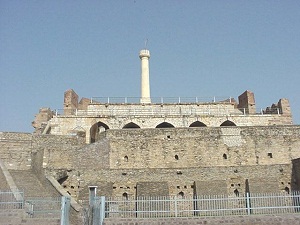
AP, South India, Architecture, Caves, History, Jyothirlinga, Temple, Wildlife Sanctuary
Kurnool District is located in Andhra Pradesh, India. Name of this place is named after the Telugu word Kandanavolu. It is the gateway to Rayalaseema. Between 1st October 1953 to 31st October 1956 this place acted as capital of Andhra Pradesh. This place is having archaeological significance. This is situated on the banks of River Tungabhadra and Handri. Sri Krishnadevaraya , Hindu King, influence is more at this place. Aurangazeb and Nizams also ruled this place. After independence Kurnool city was first ruled by Alaf Khan Bahadur.
What to see at Kurnool:
Birla Mandir: It is located on the hill named Naubath Pahad. Lord Venkateswara is worshipped here. From this temple complex, visitors can see the temple of Birla Mandir of Secunderabad.
Srisailam Dam: Construction of this dam started in 1960 completed in 1981. It is one of the 12 largest hydroelectric Projects of India. Dam was built on River Krishna.
Belum Caves: These are situated in Belum village of Kurnool. In India these caves are 2nd largest caves. Natural art work can be seen here at these caves. Major attractions of these caves are Banyan tree, Meditation Hall, Mandapam, Patalaganga, simhadwaram, Musical Chamber.
Mahanandi : Major attraction of this village is Mahanandiswara Swamy Temple. Temple is dates back to Chalukyan Period. Lord Mahanandiswara, who was the incarnation of Lord Shiva, is worshipped here. It is one of the 9 Nandi’s.
Bharmaramba Mallikarjuna Swamy Temple: It is situated in Srisalam. Lord Mallikarjuna incarnation of Lord Shiva is worshipped here. Bhramara means bee. It is believed that Goddess Parvati Worships Lord Mallikarjuna in the form of bee. It is one of the 12 jyothirlinga temple.
Rollapadu Bird Sanctuary: It is dry thorny forest. This is covered with groundnut, cereal crops, Castor and Cotton. Major attractions of this place are Indian bustards, Indian cobras, wolves, Jackals etc.
Saibaba Temple: In India this one of the biggest saibaba’s temples. Marble stone used for the idol of Saibaba. Temple is having the meditation hall having the capacity of 800 devotees.
Nallamala hills: It is the part of Eastern Ghats. These hills cover Mahabubnagar, Prakasam, Kurnool, Kadapa, Guntur districts. Near this hill Nagarjunasagar Srisailam Sanctuary is located.
Gundla Brahmeswaram Wildlife sanctuary: This sanctuary situated in both Prakasam and Kurnool districts. May and October are the best times to see this place. Major attractions are Pythons, Chinkara, Panthers etc.
Other attractions of Kurnool: Other attractions of Kurnool are Nagarjuna Srisailam Sanctuary, Kurnool Fort, Peta Anjaneyaswami Temple, Yaganti Shiva Temple, Tomb of Abdul Wahab, Adoni.
What to see around Kurnool:
Prakasam: construction of several stupas can be seen here ad Buddhism flourish in this region. Several kings such as Mauryas, Qutub Shahis, Vijayanagar Kings ruled this place. Major attractions of this district are Singarayakonda, Chirala, Motupalli, Chandavaram, Tripuantakam, Markapur etc.
Anantapur: It is other boundary of Kurnool district. Major attractions of this district are Penna Ahobilam, Veerabhadra Temple, Bugga Ramalingeswara Swami temple, Penukonda Fort, Raidurga fort, Sri Kadiri Lakshmi Narayana temple, Ravadurg Gooty Fort.
Getting to Kurnool: Kurnool is well connected with road and railways. From Hyderabad, Chitoor, Anantapur etc buses come to this place. Kurnool railways are well connected with all the major cities. Nearest airport is located at Hyderabad.
Getting around Kurnool: Autos, Taxis, buses are available to visit the surrounding places of Kurnool.
Best time to vast Kurnool: Best time to visit this place is between February and December.
Where to stay at Kurnool: Plenty of accommodations are available to stay at this place including luxury hotels. Best hotels are Rajshri Hotel, Rajasthan hotel, Rajhans International, Bhavana International.
Where to eat in Kurnool: Eateries and restaurants are plenty at this place. This place is well known for non vegetarian food.
Ahobilam is located in Allagadda Mandal in Kurnool district, Andhra Pradesh, India. This place is located 40kms away from Nandyal. According to historical mythology, Lord Narasimha Killed Demon Hiranyakashipu, father of Prahlada at this place. This place is famous for beautiful temples. Ahobilam is divided into lower Ahobilam and Upper Ahobilam. This place is considered as one of the 108 Vaishnava Divydesams in India. At this place 9 temples dedicated to Lord Narsimha.
What to see at Ahobilam:
Bhargava Narasimha Swamy Temple: At this place Bhargava Rama performed penance. It is located at a distance of 2kms away from Lower Ahobilam.
Pavana Narashimha Swamy: It is located 6kms away from Upper Ahobilam. Other name of this temple is Prahalada Varada Sannidhi. Other attractions at this temple are Prahlada Mettu and Ugra Sthambham.
Jwala Narasimha Swamy temple: It is located on the hill. Name of this hill is Achalachaya Meru. This is located 4kms away from Upper Ahobilam. At this place fierce anger of the Lord reached its culmination when he tore Hiranyakasipu.
Malola Narasmhima Swamy Temple: It is located 2kms away from main temple of Ahobilam. At this place lord seems to be so peaceful. Lord can be seen along with Goddess Lakshmi. Malola means beloved to Lakshmi.
Karanja Narasimha Swamy Temple: It is locaed 1kms away from Upper Ahobilam. Other name of place is Karanja Vruksham as image of the shrine is installed under the tree.
Varaha Naramsimha Swamy Temple: It is located 1km away from upper Ahobilam. Lord can be seen along with Goddess Lakshmi. Face of the main deity looks like boar i.e. Varaha.
Ahobila Narasimha Swamy: It is situated at Upper Ahobilam which is 8kms away from Lower Ahobilam. This is the main temple of Ahobilam. Earlier all the 9 deities were situated here. People believed that Lord Narasimha was Svayambhu here. Lord looks so angry here. So, deity is also known as Ugra Narasimha.
Chatravata Narasimha Swamy: Image of the deity can he seem under the peepal tree. This image is surrounded by thorny bushes. It is located 3kms away from lower Ahobilam.
Yogananda Narasimha Swamy: After killing Hiramyakasipu, Lord thought several yogic postures to Prahalada. This place is located at a distance of 2kms from Lower Ahobilam.
Lower Ahobilam: This is dedicated to Prahlada Varada. Temple is surrounded by 3 Prakaras. Architecture of this temple is so beautiful.
What to see around Ahobilam:
Nandyal: This place is located 40kms away from Ahobilam. It is surrounded by 9 temples of Lord Shiva called Nava Nandi. Of all the Nava Nandis, most popular place is Mahanandi. Near Nanyal Sri Yaganti Uma Maheswara Temple can be seen. At this temple devotes can see World’s largest Nandi Idol.
Getting to Ahobilam: Only way to reach this place is by road. Regular buses are available from Nandyal, Kurnool and Hyderabad. Nearest place of Ahobilam is Allagadda which is 20kms away. From this place plenty of buses come to this place. Nearest railway station is located at Kodapuram which is 14kms away from Ahobilam. Nearest airport is located at Bangalore which is 172kms away from this place.
Getting around Ahobilam: Buses and Taxis are available to visit the surrounding places of Ahobilam. Local private vehicles are the best way to visit the places of Ahobilam.
Best time to visit Ahobilam: It is essential to known the best time before visiting any place. This place welcomes the visitors throughout the year. But, weather in summer is too hot.
Where to stay at Ahobilam: Best accommodations are available to stay here but only budget and midrange hotels. Along with hotels some of the rooms will be given for rent to cook for themselves also. Cost of this rooms is ranging between Rs.1000 to Rs.1500 depend upon the season.
Where to eat in Ahobilam: Best eateries and restaurants are available at this place. As it is a pilgrim place hotels serve with vegetarian food.
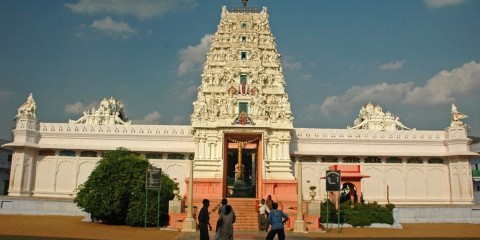
Rajasthan, North India, Architecture, Camal Safari, Fort, History, Miniature Paintings, Nature, Palace, Temple
Pushkar is a town in Rajasthan, India. It is one of the 5 sacred dhams for Hindu devotes. Pushkar is located on the shores of Pushkar Lake. This lake has 52 ghats. Pushkar means Blue Lotus Flower. Annual fair i.e Pushkar Camel Fair is famous at this place. This fair celebrates during November. Other fairs of this place are Blue Lotus Festival, Tejaji Fair, and Nagaur Fair.
What to see at Pushkar:
Brahma Temple: Lord Brahma, Creator of the World, is worshipped here. It is one of the sacred places to the Hindus. Inside the temple visitors can see Silver Carved Turtle and Life sized four armed idol of Lord Brahma. This temple was constructed in 14th century. Other attractions of this temple are Lord Brahma’s vehicle, image of swan, marble floors, stone slabs, red spire, and raised platform.
Pushkar Lake: It is considered as one of the most sacred lakes for Hindus. People believe that, origin of this lake is from the lotus petals of Lord Brahma. Visitors of this lake can see 52 bathing Ghats, 400 temples, 52 Palaces. It is believed that having bath in this lake will wipe off all the sins.
Savitri Temple: Temple is dedicated to Savitri, consort of Lord Brahma. Trekking is essential to reach this temple. From this place visitors can have spectacular view of Sand Dunes and Pushkar Lake.
Man Mahal: Rajasthani Architecture can be seen on this mahal. It was built by Raja Man Singh of Amber. Currently it is acting as tourist bungalow of the Rajasthan Tourism Development Corporation.
Rangji Temple: Lord Rangji who is the incarnation of Lord Vishnu is worshipped here. Mughal Architecture and South Indian Architectural styles can be seen here. Images of Lord Vishnu mount and Garuda can be seen here.
Pushkar Bazaar: This is the best place for shopping lovers. Major attractions of this place are handicraft items, glass lamps, brass utensils, embroidery shoes, Curios, decorative accessories and pieces, puppets, Rajasthani Costumes etc.
Other attractions of Pushkar: Other attractions of Pushkar are Mahadeva Temple, Varaha Temple, Aptaeswar Temple, Raghunath Temple, Naga Pahar, and Pap Mochani Temple.
What to see around Pushkar:
Ajmer: It is located 15kms away from Pushkar. . Aravalli Mountains covers this city. This is the holy place for both Hindus and Muslims. Ajmer Attractions are Dargarh Sharif, Taragarh, Archaeological Museum, Ana Sagar Lake, Rani Mahal, Nasiyan Jain temple, Akbar’s Palace.
Kishangarh: Rathores rules this place. This fort consists of Phool Mahal which is now converted into hotel. Major attractions of this fort is Kishangarh Art i.e. Miniature Painting style. Rich stone house of marbles can be seen here. It is located 42km away from Pushkar.
Roopangarh: In 1648, this fort was built by King Roop Singh of Kishangarh. It is nine turreted fort. Several architectural styles can be seen here. It is located 59kms away from Pushkar.
Merta: This place is famous for Palaces and Temples. Merta is founded 400 years ago. In the desert area it is major trading post. Major attractions of this place are Meera Bai Temple, Bhanwal Mata Temple, and Aurangzeb Mosque. It is located 51kms away from Pushkar.
Getting to Pushkar: Only way to reach this place is through road way. From Delhi, Udaipur, Jodhpur etc buses come to this place. Nearest railway station is located at Ajmer. Nearest airport is located at Jaipur.
Getting around Pushkar: Walking is the best way to visit the places of Pushkar . Bikes were available to visit the surrounding places of Pushkar. Buses and Taxis are also available to visit surrounding places of Pushkar.
Best time to visit Pushkar: Best time to visit Pushkar is between October to March.
Where to stay in Pushkar: Only budget hotels are available to stay in Pushkar.
Where to eat in Pushkar: Plenty of garden restaurants are available here. Famous foods of this place are mouth watering kormas, dal – bati- churma, papad ki Sabzi. Buffet meals are popular here.
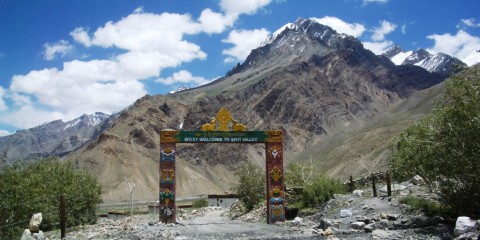
HP, North India, Adventurous sports, Architecture, Buddhist Monestery, Buddhist Stupas, Buddhist temples, Lahaul and Spiti district, Nature, Trekking, Valley, Wildlife Sanctuary
Spiti along with Lahaul forms a district in Himachal Pradesh. Spiti is famous for monasteries and adventurous activities. For Buddhism people this is one of the important places to visit.
What to see at Spiti:
Ki Monastery: In the Spiti Valley this is the largest monastery. This monastery is famous for wind instruments, stucco images, rare manuscripts, thangkas, and murals. This monastery is dates back to 1000 years. This is the best place for Pasada Style of architecture.
Tabo Monastery: It is known as Ajanta of Himalayas. Richen Zangpo, great scholar, founded this monastery. UNESCO declared this monastery as world heritage site. This monastery belongs to 10th century. Major attractions of this monastery are Stucco, Wall painting Tankhas, pieces of art, rare collection of scriptures.
Flora and Fauna: Flora and Fauna is another attraction of this valley. For the wildlife lovers major attractions are Snow leopard, Himalayan Blue Sheep, Musk deer, Himalayan Brown Bear, ibex etc. Wild flower species of this place are Krascheninikovia ceratoides, Caragana Brevifolia, Crepis Flexuosa, Seseli trilobum, Causinia thomsonii. 62 species of medicinal plants also can be seen here.
Yak Safari: It is one of the adventurous activities. This is most adventurous activity of this place. To see the flora and fauna of this region, people can hire Yaks. Horse safari also conducts here.
Skiing: In Spiti it is popular adventure sport. This game provides thrilling experience. In the recently this game developed very much in India.
To-do-Trails: Trekking is another major attraction of this place. Some of the popular trekking routes are Kaza- Tabo- Sumdo- Nako, kaza- Losar- Kunzum- La, Kaza- Ki- Kibber- Gete- Kaza, Kaza- Langza- Hikim- Komic- Kaza.
Kaza: It is the base point for trekking. Places to visit in Kaza are Hikkim Monastery and Sa Kya Pa Sect monastery. It is situated 13 kms away from Kibber.
Other attractions of Spiti: At the base of the Kunzam Range Spiti river originates. Spiti has number of monasteries such as Giu, Mane Gogma, Sagnam, Ki, Tabo, Gungri, Mud and Lidang.
What to see around Spiti:
Lahaul: Lahaul along with Spiti forms a district. Rohtang Pass connects Manali and Lahaul and Spiti districts. This place is famous for Buddhist monasteries and adventurous activities. Lahaul Attractions are Keylong, Kunzam Pass, Kibber, Gondla, Khardong Gompa, Udaipur,Triloknath Temple.
Pin Valley: It is located on the banks of river Pin. Major activities in this place are archery competitions and Horse racing. Most of the tourists attracts towards Chamurti Horses. It is a part of Spiti Valley. It is located 17kms away from Spiti.
Tandi: It is located 8 Kms away from Keylong. This is famous for Chitwan National park.
Kibber Wildlife Sanctuary: In India it is only cold desert wild life sanctuary which is located on the banks of River Spiti. Area covered by this sanctuary is 1400 sq.kms. Very rare animals such as blue sheep, snow leopard, ibex etc can be seen here. Bird species such as bearded eagle griffons, snow cock are major attraction in this sanctuary.
Getting to Spiti: Spiti is well connected with road. It is located 11kms away from Manali. From Kaza, Leh, Chandigarh, Delhi etc buses come to this place. Nearest railway head is located at Jogindernagar. From this station taxis are available to reach Spiti. Nearest airport is located at Bhuntar Airport.
Getting around Spiti: Taxis and cabs are available to visit the places in and around of Lahaul.
Best time to reach Spiti: Best time to visit this place is between mid may to mid October.
Where to stay in Spiti: Plenty of staying options are available at Kaza. Luxury accommodations are also available here. Few monasteries are providing rooms to stay. Best luxury hotels are Spiti Hotel, Delek House, Heavens Inn Spiti.
Where to eat in Spiti: plenty of restaurants are available here. Some restaurants are offering continental, Gujarati and Punjabi cuisines.
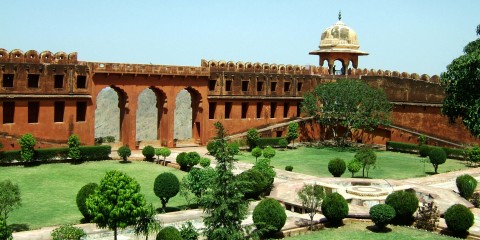
Rajasthan, North India, Architecture, Fort, History, Mughal, Musuem, Palace, Temple, Wildlife Sanctuary
Jaipur is located Rajasthan, India. It was founded by Maharaja Sawai jai Singh II in 1727. This place is well known for great history and natural beauty. This city is also known as Pink City. Specialities of Jaipur are Kota doria sarees, Minakari work, semi precious stones, Exotic jewellery etc.
What to see in Jaipur:
City Palace: It is the major attractions of Jaipur. Major attractions of this palace are audience hall, pavilions, Palace of Welcome, Museum, Maharani Palace, Rajput Weaponry, Chandra mahal, Diwan-e-Khas, Diwan-e-Aam.
Jal Mahal: It is located in the middle of Mansarovar Lake. This is one of the biggest artificial lakes. Rajasthani and Mughal Architecture style can be seen here. Red sandstone used in the construction of this mahal.
Akshardham Temple: This temple is famous for its architecture, idols, sculptures and carvings. Lord Narayana is worshipped here.
Hawa Mahal: It is five storied structure. This mahal has more than 950 windows. Latticework is the major attraction of this mahal. Mahal was designed by Lalchand Usta.
Amber Fort: In the medieval history this fort played a major role. True lifestyle of Rajputs can be known from this place. This is the right place for Muslim and Hindu architecture.
Central Park: It is a largest park in Jaipur. Major attractions of this park are Rambagh Golf Club, Rambagh Polo Ground, Big Garden, and Stone Figures. Several varieties of birds including migratory birds can be seen here.
Jantar Mantar: This monument has been awarded as largest stone observatory in the world. Instruments are used to measure the time.
Shah Mahal: It is a famous hall of mirror which is situated inside the Amber Palace. This was constructed for meeting his special guests. Belgium glass used to construct this.
Nahargarh: For the protection of Ajmer this was constructed. It is located on the Aravalli hills.
Albert Hall Museum: Major attractions of this museum are crystal works, metal sculptures, ivory goods, pottery and natural stones, Chiselled brassware, exquisite Jewellery, rare paintings.
City Palace museum: Ancient manuscripts of Hindu Scriptures are the major attraction of this museum.
Dolls Museum: Various countries and different states of India’s dolls with traditional costumes can be seen here.
Other attractions of Jaipur: Other attractions of Jaipur are Birla Mandir, Anokhi Museum of Hand Printing, Albert Hall, Jawahar Kala Kendra, Moti Doongri, Galtaji, Mubarak Mahal, Jaipur Zoo.
What to see around Jaipur:
Jaisinghpura Khor: It is located 12kms away from Jaipur. This place is famous for Jain temple and step well.
Sanganer: This place is well known for block printing with vegetable dyes and handmade paper. It is located 16kms away from Jaipur.
Ramgarh Lake: It is located 32kms away from Jaipur. It is a beautiful artificial lake spread around 20Sq.kms.
Bagru: This village is famous for a fort and Textile Printing. It is located 35kms away from Jaipur.
Madhogarh Tunga: It is located 40kms away from Jaipur. This place is famous for Madhogarh Fort.
Jamwa Ramgarh: It is located 29kms away from jaipur. This place is famous for artificial lake. Plenty of birds including migratory birds come to this place.
Getting to Jaipur: Jaipur is well connected with road, railways and airways. From Vadodara, Ahmedabad, Udaipur, Ajmer, Shahpura, etc buses come to this place. Railways of Jaipur are well connected with all the major cities such as Kolkata, Udaipur, Indore, Gwalior etc. Both domestic and international port is situated here.
Getting around Jaipur: Autos, cycle rickshaws, taxis, buses are available to see the places of Jaipur. Buses and taxis are available to visit the surrounding place of Jaipur.
Best time to visit Jaipur: Best time to visit this place is between October to March.
Where to stay in Jaipur: Plenty of accommodations starting from Budget to 5 star hotels are available to stay at Jaipur.
Where to eat in Jaipur: Plenty of restaurants are available in Jaipur. Dal Bati Churma is popular snack item of Jaipur.
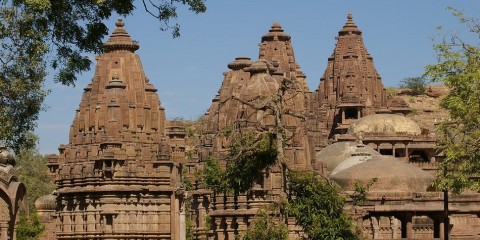
Rajasthan, North India, Architecture, Fort, History, Jodhpur, Musuem, Nature, Temple
Mandore is located in Rajasthan, India. It is one of the ancient towns in Rajasthan. In 6th century it was ruled by Gurjar Partihar dynasty. It is the birth place of several notable peoples such as Padma Sri Kailash Sankhala, Ashok Gehlot, Justice Shri Kan Singh Parihar. Major festivals of this place are Bhogishell Parikrama, Veerpuri Mela, Naag Panchami, Veerpuri Mela, Naag Panchami, Hariyali Amavasya, The Rao Festival.
What to see at Mandore:
Mandore Fort: This place has several historical monuments. Major attraction of this place is Madore Fort. This fort is famous for its architecture. Walls of this fort are very thick and substantial size. Major attraction of this fort is an ancient temple. Temple is carved with planets, animals, birds, botanical designs.
Madore Gardens: This garden consists of Charming temples and memorials. Another attraction of this place is high rock terraces. Chhatris of several rulers are placed here. Of all the Chhatris, major attraction of Chhatris is Chhatris of Maharaja Ajit Singh. It was built in 1793.
Government Museum: It is located in Mandore Garden. Plenty of artefacts can be seen here. Major attraction of this museum is The Temple of 33 crore Gods. Images of several Hindu Gods can be seen here.
What to see around Mandore:
Mehrangarh Fort: In India, this is one of the largest forts. Within the fort there are several palaces. Most famous palaces of the fort were Sheesh Mahal, Phool Mahal, Moti Mahal, Daulat Khana, Sileh Khana. Major attractions of this fort are impressive armoury, furniture, costumes, instruments, folk music, miniature paintings, royal cradles, howdas, and collection of palanquins. It is located in Jodhpur which is 6kms away from Mandore.
Jodhpur: Jodhpur is the second largest city of Rajasthan state, India. This place is famous for several temples, forts, Palaces. Jodhpur Attractions are Mehrangarh Fort, Girdikot & Sardarkot Market, Government Museum , Umaid Garden, Umaid Bhawan Palace, Jaswant Thada, Maha Mandir Temple. It is located 6kms away from the town.
Balsamand Lake & Palace: It is located 5kms away from this town. Lake is artificially made by man. It is one of the best picnic spot during the summer season.
Sardar Samand Lake and Palace: Earlier this place was acted as hunting spot by the royal families. Major attractions of this place are Chinkaras and black bucks. It is located 5kms away from this town.
Guda Bishnoi: It is located 21kms away from this town. This village is famous for flora and fauna. Local people worship Lord Vishnu and they lead vegetarian lifestyle. Major attractions of this place are Cranes, Peacocks, Chinkaras, antelopes, black bucks.
Rohetgarh: It is located 15kms away from Mandore. In 16th century this place was acted as Champawat Fort. Now it is converted into premium heritage hotels.
Getting to Mandore: Mandore is well connected with road. From Udaipur, Jaisalmer, Jaipur, Delhi, Ajmer, Ahmedabad, etc buses come to this place. Nearest railway station is located at Jodhpur. Jodhpur railways are well connected with Kota, Bangalore, Chennai, Delhi, Mumbai, Jaipur, Lucknow, Guwahati, Puri, Ahmedabad. Nearest airways is located at Jodhpur. Jodhpur airport is well connected with Mumbai, Delhi, Udaipur and Jaipur.
Getting around Mandore: Buses and autos are available to visit the places in and around places of Mandore.
Best time to visit Mandore: Best time to visit Mandore is between November to March.
Where to stay in Mandore: Plenty of accommodations are available at Mandore to stay. Budget, midrange, hotels are available to stay in Mandore.
Where to eat in Mandore: Plenty of restaurants in Mandore.
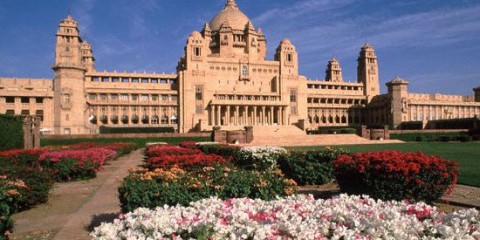
Rajasthan, North India, Architecture, Fort, History, Jodhpur, Musuem, Nature, Palace, Temple, Wildlife Sanctuary
Jodhpur is the second largest city of Rajasthan state, India. This place is famous for several temples, forts, Palaces. Other name of this city is Sun City. It was founded by Rao Jodha in 1459. He is the Rajput Chief of Rathore Clan. Major festivals of this place are Marwar festival, Jodhpur international Desert Kite Festival.
What to see in Jodhpur:
Mehrangarh Fort: In India, this is one of the largest forts. Within the fort there are several palaces. Most famous palaces of the fort were Sheesh Mahal, Phool Mahal, Moti Mahal, Daulat Khana, Sileh Khana. Major attractions of this fort are impressive armoury, furniture, costumes, instruments, folk music, miniature paintings, royal cradles, howdas, and collection of palanquins.
Girdikot & Sardarkot Market: This market is famous for fine Rajasthani Jewellery, marble knick knacks with decorative works, clay elephants, clay camels, handicrafts, Rajasthani Textiles.
Government Museum: It is located in the middle of Umaid Public Garden. This museum is famous for miniature paintings, local arts & crafts, textiles and ornaments. Other attractions of this museum are images of Jain Tirthankars, manuscripts, portraits of rulers.
Umaid Garden: Major attractions of this garden are fountains, seasonal flowers, roses, towering Ashoka Trees, Green Lawns. Area covered by this garden is 82 acres. Inside the garden visitors can see museum, a Zoo and a library.
Umaid Bhawan Palace: Maharaja Umaid Singh builds this palace with the intension to help the people who were suffering from famine. In 1977, part of this palace was converted into hotel. Remaining part was converted into museum.
Jaswant Thada: It was built in 19th century. White marble was used in the construction of Jaswant Thada. At this place visitors can see several portraits of Jodhpur rulers.
Maha Mandir Temple: Architecture of this temple is the major attraction of this temple. It was supported by 84 pillars. Pillars were decorated with several designs. Pictures of several Yogasanas can also be seen here.
What to see around Jodhpur:
Mandore: It is located 9kms away from the city. Earlier this place was acted as capital to Marwar. It is a true Oasis in the desert. This place is known as Hall of Heroes. Major attraction of this place is deities carved out of single rock.
Balsamand Lake & Palace: It is located 16kms away from the city. Lake is artificially made by man. It is one of the best picnic spot during the summer season.
Sardar Samand Lake and Palace: Earlier this place was acted as hunting spot by the royal families. Major attractions of this place are Chinkaras and black bucks.
Guda Bishnoi: It is located 25kms away from the city. This village is famous for flora and fauna. Local people worship Lord Vishnu and they lead vegetarian lifestyle. Major attractions of this place are Cranes, Peacocks, Chinkaras, antelopes, black bucks.
Rohetgarh: It is located 40kms away from Jodhpur. In 16th century this place was acted as Champawat Fort. Now it is converted into premium heritage hotels.
Getting to Jodhpur: Jodhpur is well connected with road, railway and airways. From Udaipur, Jaisalmer, Jaipur, Delhi, Ajmer, Ahmedabad, etc buses come to this place. Jodhpur railways are well connected with Kota, Bangalore, Chennai, Delhi, Mumbai, Jaipur, Lucknow, Guwahati, Puri, Ahmedabad. Jodhpur airport is well connected with Mumbai, Delhi, Udaipur and Jaipur.
Getting around Jodhpur: Buses and autos are available to visit the places in and around places of Jodhpur.
Best time to visit Jodhpur: Best time to visit Jodhpur is between November to March.
Where to stay in Jodhpur: Plenty of accommodations are available at Jodhpur to stay. Budget, midrange, luxury and heritage hotel are available to stay.
Where to eat in Jodhpur: Plenty of restaurants in Jodhpur. This place is famous for sweets. Famous sweets of this place are Maakhan Vade, Besan Ki Chaaki, and Mawa Kachori. Famous food is Mirchi Badas.
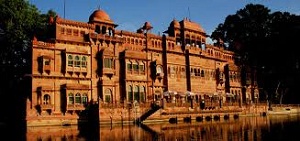
Rajasthan, North India, Architecture, Camal Safari, Fort, History, Musuem, Nature, Palace, Sand Dunes, Temple, Wildlife Sanctuary
Bikaner is a place in Rajasthan, India. Rao Bika was founded this city. This place is famous for snacks and sweets. Other name of this city is Camel Country. Major attraction of this place is Camel rides. Major festivals of this place are Camel Festival, Gangaur Festival, Kite festival, Kapil Muni fair, Holi, Jambeshwar Fair. This is one of the best places for shopping lovers also. Worth buying things are Nokha Quilts, wooden antiques, Kundan work fabrics, Lacquer Bangles, Jewellary, clothing’s etc.
What to see in Bikaner:
Jain Temple: This temple is dedicated to Shri Sumatinathji. He is the 5th Thirthankar. It was constructed in 15th century with white marble and sandstone. Major attractions of this temple are mirror work, fresco, leaf painting, Religious painting.
Junagarh Fort: Raja raj Singh founded this fort between 1588 to 1593. Major attractions of this place are Rang Mahal, Ganga Mahal, Dungar Mahal, Diwan-e-khas, Badal Mahal, Phool Mahal, Chandra Mahal, Hawa Mahal, Anup Mahal. Architecture of this fort is so beautiful.
Lalgarh Palace: In the memory of Maharaja Lal Singhji it was built by Maharaja Ganga Singh. European, Mughal, Rajput architecture can be seen on this palace.
Moolnayakji Temple: In Bikaner, this is the first Vaishnav Temple. It was built in 1486.
Ganga Golden Jubilee Museum: Major attractions of this place are antique carpets, Royal Bikaner Train, traditional Rajasthani musical instruments, terra cotta ware.
Laxminath Temple: It is one of the oldest temples of this place which was built by Rao Bikaji in 1488.
Deshnok Temples: Other name of this place is Karni Mata Temple. Silver door of this temple is one of the attractions of this temple. Rats feed here. In the temple premises rates can be seen.
Rajasthan State Archives: This place is well known for historical wealth records. Attractions of this place are Khatoot, Arzdasht , Vakil Report, Akbarat, Manshurs, Nishans, Persian Farmans.
Shiva Bari Temple: Major attractions of this place are Huge Idol of Lord Shiva and wall paintings of Nandi Bull facing Shiva lingam. Beautiful columns, Pavilions and domes are other attractions of this place.
Other attractions of Bikaner: Other attractions of Bikaner are Bhandeswari Jain Temple, Jain Havelis, Sadul Museum, Ganga Singh Museum, Prachina Museum, Gajneer Palace, and Camel Breeding Farm.
What to see around Bikaner:
Devi Kund: It is located 8kms away from Bikaner. Number of Cenotaphs can be seen here. Major attraction of this place is Chhatri of Maharaja Surat Singh. Rajput Paintings on the ceilings are also worth seeing.
Gajner Wildlife sanctuary: It is located 32kms away from Bikaner. Major attractions of this place are antelopes, desert foxes, wild boar, hares, wildfowl etc
Katariasar Village: It is located 45kms away from Bikaner. Herds of Partridges, Parrots, Peacocks, Rabbits etc can be seen here. Major attraction of this place is sand dunes. Fire dances looks so lovely.
Getting to Bikaner: Ways to reach this place is through road and railways. From Jaisalmer, Jodhpur, Jaipur etc buses come to this place. From Allahabad, Jaipur, Agra, Kolkata etc trains come to this place. Palace on Wheels so luxurious trains also connect this place. Nearest airport is located at Jodhpur which is 240kms away from Bikaner.
Getting around Bikaner: Tourists taxis, Rented Vehicles, Autos well connected different places of Bikaner. Buses and private vehicles are available to visit the surrounding places of Bikaner.
Best time to visit Bikaner: Best time to visit Bikaner is between November to February.
Where to stay in Bikaner: Plenty of hotels are available to stay in Bikaner. Forts, Havelis, Royal Palaces are available for royal treatment.
Where to eat in Bikaner: Plenty of restaurants are available to have food at Bikaner. Churma, Bati and Dal are famous food. Camel milk made sweets is also famous here.
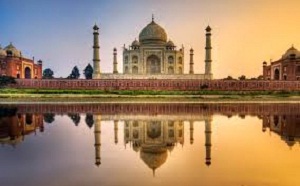
UP, North India, 7 Wonders, Architecture, Fort, History, Mughal, Nature, Palace, Shah Jahan, Temple, Tomb
Agra is a city in Uttar Pradesh, India. Once, this place acted as capital of Hindustan. It is located on the banks of Yamuna River. In the Epic Mahabharata, name of this city was Agrevana. This city was built in 1475. Lodhi and Mughals dominated this region during their reign. Shopping lovers can buy rare handicraft items, embroidery works, exquisite jewellery, leather bags, belts, shoes etc.
What to see in Agra:
Taj Mahal: It is the major attraction of Agra. This is one of the Seven Wonders of the World. In the memory of Mumtaz, this was built by her husband Shah Jahan, Mughal Emperor. This is the best example for the Mughal architecture. It was built with marble white stone.
Agra Fort: It is one of the attractions of Agra. This was built with brick. It was the residence place of Sikandar Lodi when he shifted his capital from Delhi to Agra.
Tomb of I’timad-ud-Daulah: In this city it is the Mughal mausoleum. It is also known as Baby Taj. Visitors of this place can see gardens and outbuildings along with main building. Mughal architecture can be seen here.
Tomb of Akbar: It was built between 1605 to 1613. This is situated at Sikandra. Minarets of this tomb are similar to Taj Mahal. It was built with Red Sandstone. This is one of the best examples for Mughal Architecture.
Mehtab Bagh: It is the garden complex consisting of 25 fountains. This is located opposite to Taj Mahal.
Chini Ka Rauza: At this place tomb of Allama Afzal Khan Mullah is situated. He was the Prime Minister of Shah Jahan. In 1635 this tomb was built.
Jama Masjid: It is one of the largest mosques in India which was built in 1648 by Shah Jahan. It is dedicated to his daughter Jahanara Begum.
Ram Bagah: It is oldest Mughal Garden. In 1528, this was built by Babur, Mughal Emperor. Babur was temporary buried here. Canals and pathways are attractions of this place.
Musamman Burj: It is located in Agra Fort. This is a beautiful octagonal tower. It is situated close to Diwan-e-Khas, Private Hall of Shah Jahan.
Mankameshwar Temple: Lord Shiva is worshipped here. It is one of the ancient temples in Agra. Shivalingam is covered with Silver Metal. It is believed that, When Lord Krishna born in Mathura this Shivalingam was found.
Tomb of Mariam-Uz-Zamani: Tomb of Mariam-Uz-Zamani is situated here. She was the mother of Jahangir, Mughal Emperor. It was built between 1623- 1627 CE. Architecture of this tomb is worth seeing.
What to see around Agra:
Fatehpur Sikri: It is a small town which is situated 40kms away from Agra. Several historical monuments can be seen here such as Birbal Bhavan, Sheikh Salim Chisti Tomb, Diwan-e-Khaas, Jama Masjid, Diwan-e-Aam, Panch Mahal, Buland Darwaza.
Getting to Agra: Agra is well connected with road, railways and airways. Agra has 2 major bus terminals. Both were well connected with Kanpur, Lucknow and Delhi. City has 4 main railway stations. They were Idgah Agra Junction, Agra Fort, Raja Ki Mandi and Agra Cantonment. All the stations are well connected with other important cities of India. Kheria airport is the Agra airport which is located 12kms away from the heart of the city. Airport is well connected with Khajuraho, Delhi and Varanasi.
Getting around Agra: Autos, Cycle Richshaws, Tempos, Tonga’s, electric buses are available to visit the places of Agra. Buses and Taxis are available to visit the surrounding places of Agra
Best time to visit Agra: Best time to visit Agra is between October to March.
Where to stay in Agra: All range of hotels are available to stay in Agra. Few resorts are available here. Budget hotels were ranging between Rs.100 to Rs.1000.
Where to eat in Agra: Plenty of restaurants are available here. Specialties of the city are Pethas, Dalmoth, Gajak, and Pedas.
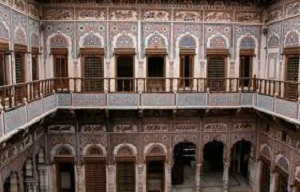
Rajasthan, North India, Architecture, Fort, Havelis, History, Jaipur, Masjid, Musuem, Nature, Palace, Temple
Shekhawati is a historical region in the northern part of the Rajasthan, India. This region consists of districts such as Nagaur, Churu, Sikar and Jhujhunu. History of these places dates back to 18th and 19th centuries. Grand Havelis in this region was constructed by Marwari Merchants. Shekhawati is derived from Rajput Kachwaha Chieftain Rao Shekha Ji. Rao Shekha ji decedents ruled this area. They were called as Shekhawats. This region is famous for hard working and brave people. Worth buying things of this place are metal utensils, Paintings, tie dye fabrics, wood carvings etc. Gangaur and Teej are the major festivals of this region.
What to see in Shekhawati:
Sikar: This is the major district of Shekhawati. Major Havelis of the town are Sanganeria, Kedia Haveli, Mirijamal Kyala, Bansidhar Rathi, and Sawant Ram Chokhani. Khatu Shyamji Temple is most famous in the village Khatu Shyamji. This temple is famous for shaving off the children’s hair for the first time. Other attractions of this district are jeen Mata Temple and Radha Murali Manohar Temple.
Churu: This place is famous for forts and Havelis. Traditional Rajasthani architectural style can be seen here. Major attraction is fort built by Thakur Khushal Singh. Other attractions are Raghunathji Temple, Aath Kambh Chhatri, Laxminarayanji Temple etc.
Nawalgarh: It is Golden city of Rajasthan. Major attractions of this place are Roop Niwas palace, Bansidhar Bhagat, Chokhani, Anandi Lal Poddar, Jodhraj Patodia etc.
Mandawa: Worth seeing havelis are Ganeriwala and Kanoria. It has good handicraft market.
Fatehpur: This place is famous for Singhania and Devra havelis. These were constructed in Western and Indian style. Other havelis of this place are Bharatiya, Jalan, Hukmi Chand Choudhri, Goenka.
Baggar: Piramal Haveli is famous here. Rajasthani Colonial style can be seen here.
Dundlod: This place is well known for havelis and forts. Impressive library and stained glass windows of the forts Diwan I Khas antiques are other attractions. Visitors should not miss to see Goenka haveli.
Lachhmangarh: Worth visiting place here are Sanganeria, Kedia, Rathi, Kyala, Chokhani Havelis.
Khetri: In Jaipur, this is the second wealthiest Thikana. Major attractions of this place are Panna Lal Shah Ka Talab, Bhopalgarh and Raghunath Temple.
Other attractions of this place are Churi ajitgarh, Parasrampura, Mehansar, Alsisar and Malsisar, Chirawa, Jhujhunu.
What to see around Shekhawati:
Chittorgarh: It is the ancient city in Rajasthan. A major attraction of this place is fort of Chittorgarh. It was built in 7th century AD. Height is 180metesrs tall. Other attractions are Rani Padmini Palace, Rana Kumbha Palace, Kalika Mata Temple.
Udaipur: It was founded by Maharana Udai Singh in 1559. Foreign tourist rush is more at this place. This place is known for its Palaces, Havelis and Temples. Other attraction is Azure Lakes.
Mount Abu: It is the only hill station in Rajasthan. Major attractions of this place are Dilwara Jain Temple which was constructed between 11th and 13th centuries. Other places are Achalagarh fort, Dattatreya Temple, Adhar Devi Temple, Ambika Mata Temple etc.
Getting to Shekhawati: Shekhawati is well connected with road and railways. Direct buses are available from Delhi. Places of Shekhawati are well connected with other cities. Trains are available from Jaipur and Delhi. It is easy to reach Shekhawati form Bikaner and Jaipur. Nearest airport is located at Jaipur which is 150kms away from Shekhawati.
Getting around Shekhawati: Private and government buses are available to visit the town and surrounding places of Shekhawati. Taxis and Autos are also available to visit in and around places of Shekhawati.
Best time to visit Shekhawati: Best time to visit Shekhawati is between October and March.
Where to stay at Shekhawati: Plenty of accommodations are available to stay at Shekhawati including luxury hotels. Resorts are also available to stay at this place.
Where to eat in Shekhawati: Plenty of eateries are available here. Though restaurants provide non vegetarian, Rajasthanis were basically vegetarians. Famous food is Lahsun Ki Kachori.
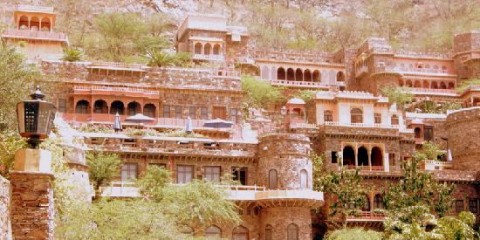
Rajasthan, North India, Architecture, Fort, History, Mughal, Musuem, Nature, Palace, Tomb, Wildlife Sanctuary
Alwar is a city of Alwar district of Rajasthan, India. Formally Alwar was the capital of Princely state of Alwar. In 1770, Pratap Singh has founded the princely state. Major attraction of this place is Sariska Tiger Reserve. To see this reserve both national and international tourists come to this place. For the shopping lovers also this is the best place. Double dyed Saris, Colourful bangles, artefacts, silver jewellery etc are worth buying at this place. Roaming through the old avenues in the town is most memorable experience.
What to see in Alwar:
City Palace: This was built by Raja Bhaktawar in 1793 AD. Mughal and Rajput style can be seen in this palace. In large central courtyard, bases are made up of lotus flower. Major attractions of this place are emerald cut drinking cup, Maharaja’s personal belongings, trinkets, artworks, etc.
Bala Quila: Bala Quila means young fort. Other name of this fort is Alwar fort. There are 446 holes for firing guns from this quila. It consists of 51 small towers and 15 large towers. Nikumbha Mahal Palace is located inside the quila.
City Palace Museum: This is located inside the city Palace. Royal elegance is preserved at this place. It is divided into 3 sections. Major attractions of this place are Mughal Paintings, Rajput Paintings, objects made up of Silver, Jade, Ivory, Rajput weapons etc.
Moti Doongri: This is famous for Lakshmi Narayan Temple, Ganesh temple and Swank Palace. It was once the residence place of Rajmata Gayatri Devi. Architecture of this structure is so unique.
Siliserh Lake: In 1845 AD this was constructed by Maharaja Vinay Singh. Now it was converted into heritage hotel. Plenty of migratory birds can be seen here. This is one of the best spots for anglers.
Vinay Vilas Palace: It is located near Alwar Fort. Earlier it was the residence of Maharaja Vinay Singh. Other name of this palace is Garden Palace. This was built in Mughal and Rajasthani Styles. Carved structures of this palace are so attraction.
Other places to visit in Alwar: Other places to visit in Alwar are Company Bagh, Bhangarh Fort, Moosi Maharani Ki Chhatri, Tomb of Fateh Jung, Vijay Mandir Palace, Purjan Vihar, Choohar Sidh Falls, Tripolia Imperial Mausoleum, Cenotaph of Maharaja Bakhtawar Singh.
What to see around Alwar:
Sariska Tiger Reserve: It is located 53kms away from Alwar city. This area is Rich in mineral resources such as copper. In the world this is the first tiger reserve. Major attractions of this place are Bengal tiger, Golden Jackal, Striped hyena, Caracal, Jungle cat, Leopard etc.
Karni Mata Temple: This temple is dedicated to Karni Mata who is an incarnation of Goddess Durga. Other name of this temple is Rats Temple. Nearly 20,000 rats can be seen here. Devotees offer sweets and milk to the rats.
Natni Ka Baran: This place is famous for ancient Shiva Temple. It is the ideal place for relaxation.
Other attractions near Alwar: other attraction near Alwar Garbhaji Falls, Krishna Temples, Talvriksha.
Getting to Alwar: Alwar is well connected with road and railways. From all the major cities state run buses and private buses come to this place. Alwar railway station is well connected with Delhi and Jaipur. Sanganer airport in Jaipur is the nearest airport to Alwar. This airport is located 162kms away from the city. Airport is well connected with Delhi and Mumbai. Taxis are available to reach Alwar from the airport.
Getting around Alwar: Autos and buses are available to visit the surrounding places of Alwar.
Best time to visit Alwar: Mild showers and moderate climate can be enjoyed between July to September. Best time to visit this place is between October to March.
Where to stay in Alwar: Plenty of hotels including luxury hotels are available to stay in Alwar. Cost of budget hotels is Rs.500 per day and cost of luxury hotels is between Rs.3000 to Rs.5000 per day.
Where to eat in Alwar: Plenty of eateries are available to have food at Alwar. Jain food is also available at this place. Famous food of this place is mirchi ka achaar, gajar ka halwa in pure ghee, allu parathas.
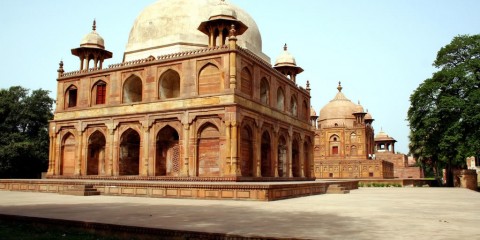
UP,North India, Architecture, Fort, History, Musuem, Palace, Temple, Tomb, Water Sports
Allahabad is a metropolitan city of Uttar Pradesh, India. Earlier name of this place is Prayaga which means place of offerings. In India this is the second oldest city. It is situated on the confluence of Ganga, Yamuna and Saraswati. This is one of the 4 sites where Kumbh Mela is held every 12 years. In Allahabad plenty of temples and Palaces can be seen. According to Hindu Mythology, Lord Brahma had chosen this place to perform Prakrista Yagna at the beginning of creation of the Universe.
What to see in Allahabad:
Kumbh Mela: It is a mass Hindu pilgrimage of faith in which Hindus gather to bath in a sacred river. Kumbh Mela conducts here for every 12 years in Allahabad.
Allahabad Fort: This fort is most attractive due to unique design, construction and craftsmanship styles. It consists of 3 galleries flanked by high towers. Inside the fort one can see Zenana, 3rd Century BC Ashoka Pillar and Mariam –UZ- Zamani Palace.
Khusro Bagh: This was built around the tomb of Khusro. He was the eldest son of Emperor Jahangir. This garden is most beautiful.
Anand Bhavan: In this mansion, Jawarharlal Nehru and Indira Gandhi were born. In the 19th century this was built by Motilal Nehru.
Allahabad Museum: Major attractions of this museum are terracotta artefacts, natural history exhibits and archaeological findings. It also consists of belongings of Jawaharlal Nehru.
Triveni Sangum: Once in every 6 years Ardh Kumbh held at this place. Once in 12 years Kumbh Mela held here. Most memorable thing is sun rise and sunset of this place. This is the place where confluence of Saraswati, Yamuna and Ganga takes place.
Bharadwaj Ashram: This is dedicated to Sage Bharadwaj. Other temple in this place is dedicated to Prayagraj. He is the lord of Prayag.
Minto Park: Lord Minto laid the foundation for this park in 1910. In this place power of East India Company transferred to British Crown in 1858.
Other attractions of Allahabad: Other attractions of Allahabad are Kalyani Devi Temple, Ashoka Pillar, Hanuman Mandir, All Saints Cathedral, Lalitha Devi Temple, Alfred Park, Shankar Viman Mandapam, Mankameshwar Temple, Swaraj Bhawan, Shivkoti Mahadev Temple, Allahabad Planetarium, Alepidevi Temple, Undying Banyan Tree, Allahabad High Court, New Yamuna Bridge, Mayo Memorial Hall, Jawahar Planetarium, Narayan Ashram.
What to see around Allahabad:
Jhusi: This place is famous among the people who are looking for spiritual healing and mental peace. Plenty of ashrams and temple are located here. It is situated on the banks of river Ganga. This is located 9kms away from the city.
Shringverpur: This place is having historical importance in the epic Ramayana. Shringverpur was once the capital of Kingdom of Nishadraj i.e. King of Fisherman. It is located 40kms away from the city.
Garhwa: This is attractive place for history lovers. Glimpses of ancient North Indian can be seen here. Gupta era temples are the major attraction of this place. It is located 60kms away from the city.
Bhita: It is archaeological site which is dates back to 300 BC. This place is situated 20kms from Allahabad.
Getting to Allahabad: Allahabad is well connected with road, railways and airways. From all the major cities buses and trains come to this place. Airport located in Allahabad is Bamrauli airport which is located 15kms away from the city centre. Airport is well connected with Lucknow and Varanasi.
Getting around Allahabad: Autos, taxis and buses are available to visit in and around places of Allahabad.
Best time to visit Allahabad: Best time to visit this place is between October to March.
Where to stay in Allahabad : Plenty of accommodations available in Allahabad. Hotels in the city offer trips around the city. Minimum cost of an economy room is Rs.1000 per day.
Where to eat in Allahabad: Plenty of restaurants are available to eat in Allahabad. Moghlai Cuisine of Allahabad is most famous.
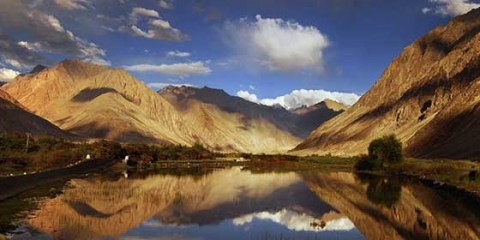
Jammu & Kashmir, North India, Architecture, Buddhist Monestery, Buddhist Stupas, Camal Safari, Hot Springs, Nature, Orchards, Sand Dunes
Nubra Valley is a tri armed Valley. It is located to the north east of Ladakh Valley, Jammu and Kashmir. Nubra is the capital of Diskit. Earlier name of this valley is Ldumra. Ldumra means valley of flowers. This valley is famous for monasteries, Bactrian camels, Scenic Vistas and Orchards. Another attraction of this place is cold desert which lies between Hunder and Diskit. Tourists come to this place to enjoy the joy rides of Bactrian camels and sand dunes. It is surrounded by snow covered Himalayan ranges. This is the best place to purchase Socks, Pashmina Shawls and Kashmiri Carpets.
What to see in Nubra Valley:
Diskit Monastery: It is the oldest and largest Buddhist Monastery in the Nubra Valley. Monastery is the house for more than 100 monks. Monastery consists of Prayer hall. This hall is having several images of fierce guardian deities and a statue of Maitreya Buddha. Other attractions of this place are Lachung Temple and double humped Bactrian camel. It is 350 years old monastery.
Ensa Gompa: From this Gompa visitors can have the spectacular view of Nubra Valley. This gompa is 250 years old gompa. From Panamik Village it will take 6 hours to reach this gompa through trekking. This gompa is famous for scriptures and Buddhist Murals.
Samstemling Gompa: In 1962, this was inaugurated by Dalai Lama. It is located in Sumur village. Major attractions of this gompa are collection of seven shrines, thangkas, murals and Buddhist idols.
Hunder: This is one of the popular Buddhist Monasteries. Major attractions of this place are camel rides, sand dunes, water streams.
Panamik: This is one of the popular picnic spots of the place. It is India’s final frontier towards Tibet. This place is famous for hot water springs.
What to see around Nubra Monastery:
Likir Gompa: It is one of the old monasteries in Ladakh district. Major attractions of this gompa are Stupas, thangkas, murals, architecture of 75 feet Buddha statue.
Leh Palace: It is Potala Palace in Lhasa. This is 17th century royal residence. Near to this palace, victory tower was built on Namgyal hill. This was built to symbolise the victory over Balti Kashmir armies in 16th century.
Matho Monastery: Major attractions of this monastery are art works, stupas, murals and festivals. It is located at the mouth of gorge in Zanskar range. This was constructed in 16th century.
Hemis Gompa: In 1672AD this was constructed. Every year colourful festival celebrates here in the month of July.
Khardung La: This is the only way to enter into Nubra Valley. Other name of this place is K-Top. In the world, this is one of the highest motorable roads. During the winter season this way will be closed due to heavy snow fall.
Getting to Nubra Valley: It is well connected with road. Visitors can be reached to this place from Leh by jeep or by bus. Visitors require inner line permit to enter into the Nubra Valley. After Khalsar, one road leads to Diskit and other road leads to Sumur till Panamik. Nearest railway station is located in Jammu. Taxis are available to reach Leh. Nearest airport is located at Leh. Taxis are available to from the airport to reach Diskit monastery.
Getting around Nubra Valley: Best way to visit the places in and around Nubra Valley is by own vehicle or by Jeep.
Best time to visit Nubra Valley: As snowfall is heavy in this place, best time to visit this place is between June to August.
Where to stay in Nubra Valley: Midrange guest houses are available at Diskit. Good hotels are available at Hunder. Sumur has deluxe camps to stay in Nubra Valley.
Where to eat in Nubra Valley: Both guest houses and hotels situated in this valley provides European, Continental, Chinese and Indian meals.
Osian is an ancient town in Jodhpur district of Rajasthan, India. Other name of this place is Khajuraho of Rajasthan. This is an Oasis in the Thar Desert. Major attractions of this place are Jain and Brahmanical temples dates back to 8th and 11th centuries. Golden sand dunes surround this place. Architectures and carvings of this place are so attractive. Camel Safari is most famous in the desert.
What to see in Osian:
Kali Temple: Devi Kali is worshipped here. Devi Kali is an incarnation of Goddess Durga. This is most ancient temple which dates back to 8th century.
Sun Temple: Lord Sun is worshipped here. This temple is dates back to 10th century. Images of Serpents coiled around lotus flowers on the ceiling of the temple. This temple looks like temple at Ranakpur.
Harihara Hindu Temples: Harihara Temples are located in the southern part of the Osian. It is group of 3 temples. Two temples are constructed in 8th century and one was constructed in 9th century. When compared with other temples of Osian, architectures of these temples were so advanced. Lord Krishna and Radha dancing postures on the walls of the temples are so attractive.
Sachiya Mata Temple: Goddess Sachi Mata is worshipped here. She is the wife of Lord Indra. This temple is most popular among Jains also and they conduct Mundan Sansakar at this temple. Oswal Jains also worshipped Goddess Sachi. Other two shrines of the temple are Amba Mata Mandir, Chandi Ka Mandir. At the east end of the temple complex, Lakshmi and Vishnu images can be seen and at the north end to the temple, Varaha sculpture can be seen who is an incarnation of Lord Vishnu.
Pipplala Temples: It is a small temple of Osian which was constructed dates back to 9th century. Major attractions of this temple are 30 pillars assembly hall, large sabha Mandap and columns.
Jain Mahavira Temple: This temple was dedicated to Lord Mahavira, 24th Jain Thirthankara. In 783AD this was constructed by Gurjara Pratihara King Vatsaraja. Architecture of this temple is so attractive. Young Maidens impressions can be seen at the main door of the temple. Height of this temple statue is 32inches.
What to see around Osian:
Shri Mandore Bherji: It is located in Mandore which is 51kms away from Osian. This is the temple of Oswal Community people. Lord Bherji is worshipped here. This temple also consists of 33 crores god shrines.
Jodhpur: It is located 67kms away from Osian. This place is famous for temples and forts. History of Jodhpur dates back to 1100 BC. Rajasthani Textiles, Jewelleries, handicrafts are most popular at this place. This place is known as Golden city of Rajasthan.
Khimsar: It is located 65kms away from Osian. This is converted into heritage hotel. It was 16th century fort. This place is famous for birds.
Getting to Osian: Osian is well connected with road ways. From Jaipur, Jodhpur, Bikaner etc buses come to this place. Nearest railway station is located at Jodhpur which is 67kms away from Osian. From Kota, Jaipur, Bikaner, Guwahati etc trains come to this place. Nearest airport is located at Jodhpur. This airport is well connected with Udaipur, Mumbai and Delhi.
Getting around Osian: This place can be explored through foot. Camel safari in this town is one of the attractions of this place. Buses and Taxis are available to visit the surrounding places of Osian.
Best time to visit Osian: Best time to visit this place is between November to March.
Where to stay in Osian: Accommodations are limited at this place. Plenty of accommodations are available at Jodhpur. Luxury hotels provide camel safaris.
Where to eat in Osian: Eateries are limited in Osian. Almost all the eateries serve local Rajasthani food.
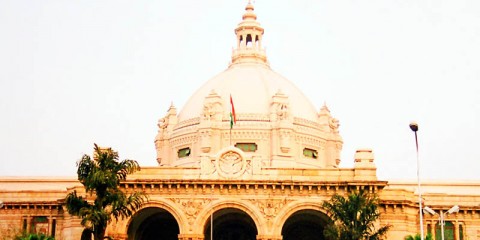
UP, North India, Architecture, Masjid, Musuem, Nature, Palace, Temple, Tomb, Wildlife Sanctuary
Lucknow is a city of Uttar Pradesh, India. It is a metro city. This place was nourished during the Nawabs period. Culture of Nawabs can be seen here. This place is also known as Golden City of the East. It is believed that city is named after Lakshman, brother of Lord Rama. Rama ordered Lakshman to rebuild a town. Now this is known as Lucknow. Chikan Embroidery is most famous at this place. Waist bands, nose pins, colorful bands etc are worth buying in this place.
What to see in Lucknow:
Chowk: It is the market place of Old Lucknow. This is the best place for the shopping lover.
Aminabad: This is another attraction for the shopping lovers. Major attractions of this place are fancy items, men’s chikan wear, ladies wear, fashion garments etc.
Bara Imambara: This place is well known for its Nawab architecture. In 1784, this was built by Asaf-ud-Daula. This complex consists of Step wells, gate ways, courtyards, mosques.
The Residency: To serve as the residence of the British Resident General this was established in 1800 AD. This became famous after Sepoy Mutiny in 1857. At that time 2000 soldiers died in this place. Graves of these soldiers are placed here.
Chattar Manzil: Beautiful European architecture can be seen here. As its dome is in the shape of umbrella it was named as Chattar Manzil.
Moti Mahal: Other name is Pearl Palace. This was built by Nawab Saadat Ali Khan during 1798- 1814. It was constructed as citadel, for watching enemy operations and for bird watching purpose.
Lucknow Zoo: Major attractions of this zoo are 97 different species of wild animals, 57 reptiles, 348 birds, 447 mammals. Indian Rhinoceros, Hoolock, Gibbons, Himalayan Black Bear, Royal Bengal tiger etc also can be seen here.
Ramakrishna Math: This is functioning from past 7 decades. Idols of this math are Swami Vivekananda, Mother Sarada Devi and Sri Ramakrishna. This math consists of garden. It was made up of Marble.
Aurangzeb’s Mosque: This is best example for Indo Muslim architecture.
Other attractions of Lucknow: Other attractions of Lucknow are Constania, Rumi Darwaza, Hazratganj Market, Shaheed Smarak, Begum Hazrat Mahal Park, Council house, 1857 Memorial Musuem, Chota Imambara, Gautam Buddha park, Juma Masjid, Husainabad Clock Tower, Satkhanda, Farangi Mahal, Shah Najaf Imambara, Dilkusha Kothi Palace, Sikander Bagh.
What to se around Lucknow:
Kukrail Forest Reserve: It is located 15kms away from Lucknow which was developed by Forest department. This place is famous for Crocodile Nursery and Deer farm. Rest house, Cafeteria, Children’s Park are other attractions of this place.
Nawabganj Bird Sanctuary: This is one of the best places for natural lovers as well as for the bird lovers. It is located 43kms away from Lucknow.
Crocodile Nursery: It is located 15kms away from Lucknow. This was established in 1978. Aim of this nursery was to protect the endangered crocodiles of the river.
Getting to Lucknow: Lucknow is well connected with road, railways and airways. From Dehradun, Delhi, Allahabad, Kanpur etc buses come to this place. From Kolkata, Chennai, Delhi, Bangalore, Mumbai, Thiruvananthapuram etc trains come to this place. From Mumbai, Jaipur, Bangalore, Chennai, Kolkata, Delhi flights come to Lucknow. Airport is located 14kms away from the city. Nearest international airport is located at Delhi which is located 497 kms away from the city.
Getting around Lucknow: Buses, Taxis, Autos and Tempos are available to see the places of Lucknow. Buses and Taxis are available to visit the surrounding places of Lucknow.
Best time to visit Lucknow: Best time to visit this place is between October to March.
Where to stay in Lucknow: Plenty of accommodations available to stay in Lucknow including luxury hotels. Along with hotels, guest houses are also available to stay at this place.
Where to eat in Lucknow: Plenty of restaurants are available to have food in Lucknow. Tundey Kebab is most famous food in Lucknow. Lucknawi Chat is world famous chat. Along with Indian, international cuisines are also available.
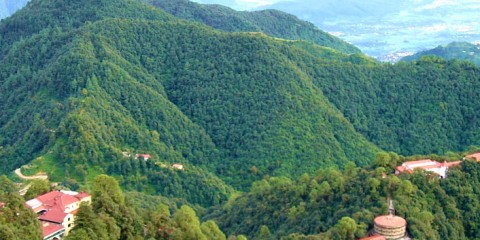
Uttarakhand, North India, Architecture, Hill station, History, Musuem, Nature, Temple, Trekking, Valley, Wildlife Sanctuary
Almora is a cantonment region in Almora district of Uttarakhand, India. This place is considered as cultural heart of Kumaon region. It is most popular hill station situated at a height of 6000meter above the sea level. This place is starting point for trekking to Ranikhet, Binsar, Mukteshwar, etc. During the rule of Chand dynasty, Almora was founded by Kalyan Chand in 1568. Nanda Devi festival, Uttaryani Festival, Jageshwar Monsoon festivals are most famous festivals in this place.
What to see in Almora:
State Museum: Other name of this museum is Govind Ballabh Pant Museum. Major attractions of this museum are artifacts belong to Katyuri dynasty and Chand dynasty. Another attraction of this museum is folk paintings. Two galleries can be seen here. One is Manav Vikas Ki Katha and Ganga River Culture Gallery.
Chaitai Temple: This temple is dedicated to Lord Gollu who is an incarnation of Gaur Bhairav. Wishes of devotees write on the paper and they will keep on the foot of the Lord. People believe all their wishes will fulfil.
Nanda Devi Temple: In the Kumaon region it is one of the most famous temples. Kumaoni style can be seen in the temple. This temple is dates back to 1000 years. Stone carvings on the walls of the temple are another attraction of this temple.
What to see around Almora:
Deer Park: It is located just 3kms away from Almora. This the best place for evening walk. Major attractions of this park are Himalayan Black bear, Leopard and deer. Pine trees welcome the visitors to this place.
Bright End Corner: It is located 2kms away from Almora. Sunrise and sunset are most beautiful from this place. Shri Ramakrishna Kutir Ashram is a centre for meditation is so famous. Vivekananda Library is another attraction of this place.
Simtola: It is located 3kms away from Almora. Once granite hill and diamond mining are attractions of this place but now this place was covered with fur and pine trees.
Kalimath: It is located 5kms away from Almora. Name is derived from the words Kali and Math. Kali means black and Math means soil. Spectacular view of Himalayas is possible from this place. Another attraction of this place is Kasar Devi temple which is dedicated to Goddess Kali. This temple dates back to 2nd century.
Katarmal Sun Temple: This temple is dedicated to Lord Sun which is located 16kms away from ALmora. After sun temple in Konark, this temple got second importance. This temple dates back to 800 years. Architecture is so attractive.
Jageshwar: It is located 24kms away from Almora. This is one of the 12 Jyothirlingas. Main temple is dedicated to Lord Shiva. This place consists of 124 shrines. Temple complex consists of 104 shrines dates back to 8th century to 18th century.
Sadar Bazaar: It is situated in Ranikhet which is located 53kms away from Almora. This is the best place for shopping lovers. Major attractions of this place are dry fruits, traditional jewellery, wooden bangles, garwali shawls, blankets, carpets, readymade garments, handicrafts etc. Apart from shops, plenty of hotels and restaurants are also located here.
Getting to Almora: Almora is well connected with road and railways. From Ghaziabad, Thane, Ludhiana, Mumbai, Delhi, Kanpur, Jaipur etc buses and trains come to this place. Nearest airport is located at Pantnagar which is 125kms away from Almora. This airport is well connected with Delhi. Nearest international airport is at Delhi.
Getting around Almora: As Almora is very small town, visitors can see the places on foot. Buses and taxis are available to visit the surrounding places of Almora.
Best time to visit Almora: Best time to visit this place is between March to November.
Where to stay in Almora: Only Budget and midrange hotels are available to stay in Almora. Almost all the hotels are located in Link road and Mall Road.
Where to eat in Almora: Eating options are limited in Almora. Most famous sweet of this place is Bal Mithai.
Vrindavan is a town in Mathura district of Uttar Pradesh, India. Vrindavan is derived from the word Vrinda which means Tulsi. This place was having plenty of Tulsi plants. Two small groves of Vrinda still exists namely Seva Kunj and Nidhivan. According to Hindu Mythology, Lord Krishna spent his childhood place in this town. This place is famous for temples.
Ancient name of this town is Brindavana. In 1515, this place was rediscovered by Chaitanya Maharprabu when he was in search of places relating to Lord Krishna. Plenty of Ashrams are located here. Loi Bazaar is the best shopping place of Vrindavan. Cloths, Incense, fruits, handicrafts are worth buying in this place. Necklaces, Finger rings, Paintings, Portraits, Sculptures with the image of Lord Krishna can be seen here.
What to see in Vrindavan:
ISKCON Temple: This is the first temple constructed by ISKCON. It was built by Swami Prabhupada in 1966. This was established with the intension to spread Vedic scriptures and teachings of Bhagawad Gita.
Bankey Bihari Temple: In this temple posture of Tribhanga of Lord Krishna can be seen. During Jhulan yatra, Lord Krishna is placed in golden swing. For every few minutes curtain of the temple arises and shut down. It is believed that power of the god seems for the long time devotees will be unconscious.
Madan Mohan Temple: It is one of the oldest temples of this place. Lord Madan Gopal worshipped here. Aurangzeb shifted main deity to Karauli in Rajasthan. Only replica can be seen here.
Yamuna River: This River considered as Holy River as it flows from Mathura and Vrindavan. To purify from the sins, devotees take bath in this river.
Prem Mandir: This is two storied temple which was constructed with Italian Marble. Fountains are the major attractions of this place.
Seva Kunj and Nidhuban: In this place Lord Krishna Performed Raslila with Radha. It is believed that Krishna comes to this place during the night time. So entry restricted in the night.
Kesi Ghat: It is located near the banks if Yamuna River. It is believed that after killing demon Kesi, Lord Krishna had taken bath here.
Rangaji Temple: It is Dravidian style structure. Temple is dedicated to Lord Rangaji. Major attractions are six storey long gopuram, gold plated 50ft high Dhwaja Stambha.
Shahji Temple: This temple is known for beautiful sculpture and architecture. Another attraction of this place is Darbar Hall. This consists of beautiful paintings along with Belgian glass chandeliers.
What to see around Vrindavan:
Gokul: It is located 15kms away from Vrindavan. Gokul Nathji Temple is most famous at this place. Lord Krishna was brought up in secrecy here by his foster parents.
Government Museum: It is located in Mathura which is 11kms away from Vrindavan. Major attraction of this museum is Red sandstone sculptures. Another attraction is two Buddha statues belong to 4th and 5th centuries.
Mathura: It is located 10kms away from Vrindavan. It is the birth place of Lord Krishna.
Getting to Vrindavan: Vrindavan is well connected with road and railways. From Agra, Mathura, Haridwar etc buses come to this place. At Vrindavan railway station all trains do not stop. Nearest railway station is located at Mathura which is 14kms away from Vrindavan. Taxis are available from Mathura to Vrindavan. Nearest airport is located at Delhi i.e Indira Gandhi International Airport which is 150kms away from Vrindavan.
Getting around Vrindavan: Cycle rickshaws are available to visit the place in the city. Buses and Taxis are available to visit the surrounding places of Vrindavan.
Best time to visit Vrindavan: Best time to visit this place is between October to March.
Where to stay in Vrindavan: Limited staying options in Vrindavan. Best option to stay at this place is ISKCON temple guest houses. Plenty of accommodations are available at Mathura.
Where to eat in Vrindavan: Limited options to eat in Vrindavan. Best vegetarian food available at Govindas Restaurant. Lassi and Jal Jeera drink are most famous at this place.
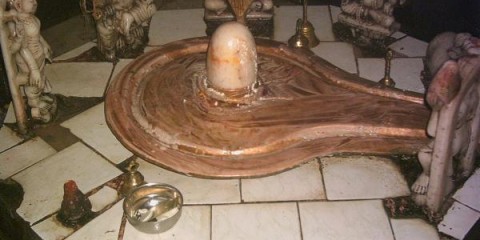
Uttarakhand, North India, Architecture, Hill station, History, Mountain Passes, Musuem,Temple, Trekking
Mukteshwar is a town in Nainital district of Uttarakhand, India. This place is named after the temple Mukteshwar Dham temple. This temple is dedicated to Lord Shiva. It is known for Scenic Splendour and breath taking view of Nanda Devi peak and Himalayan ranges. Plenty of fruit orchards can be seen here. Attractions of this place are trekking, artificial climbing, rappelling, practice rock climbing.
What to see in Mukteshwar:
Shiva Temple: Other name is Mukteshwar Dham. This is one of the major attractions of this place. It is more than 350 years old temple. White marble Shivalingam with copper Yoni is major attraction of this temple. Idols of Lord Vishnu and Brahma can also be seen here.
Sitla: It is one of the attractions of this town. This place is famous to enjoy the beauty of Himalayan ranges. It is an ideal hill station. 100 years old British bungalow is another attraction of this place. Trekking activity conducts here.
Indian Veterinary Research Institute: This was established in 1893. Research conducts on bacteriology, genetics and animal nutrition. Veternity museum and library are other attraction in this campus.
Chauthi ki Jaali: It is one of the tourists spot in this town. From the place visitors can enjoy spectacular view of Kumaon Valley. It is surrounded by numerous rocks. It is believed that natural lattices and hole in the rock are the remnants of the battle between goddess and demons. Rappling and mountain climbing activities take place here.
Raja Rani Temple: Stone sculpture of Rajarani is the major attraction of this place. It was constructed in 11th century. Variety of dance postures and moods of stone carving figures of females can be seen on this temple.
Brahmeshwara Temple: This was constructed in 1050. It is famous for its stone carvings.
Mukteshwar Inspection Bungalow: This place is famous for beautiful architecture. Edward James used to spend his spend time in his rest house. He is famous hunter. Kettle used by him can be seen here.
What to see around Mukteshwar:
Ramgarh: It is located 27kms away from the town. During the British period this place acted as cantonment area. Area is divided into upper and lower region i.e. Malla Ramgarh and Talla Ramgarh. Major attraction of this place is peach, apricot and apple orchards. Other attraction is library of Mahadevi Verma, famous poetess and painter.
Peora: Other name of this place is fruit bowl of Uttarakhand. It is located 8kms away from the town. Popular activities of this place are trekking, game watching, and Bird watching.
Nathuakhan: It is located 19kms away from the town. Major attraction of this place is Kaphal, birch, pine and oak trees. Himalayan ranges can enjoy from this place. Trekking activities and natural walks famous at this place. Cottages made up of stone and wood is another attraction of this place.
Getting to Mukteshwar: Mukteshwar is well connected with roadways. From all the nearest cities buses and taxis come to this place. Nearest railway station is located at Kathgodam which is 73kms away from Mukteshwar. From Ahmedabad, Howrah, Jammu, Dehradun etc trains come to this place. Nearest airport is located at Pantnagar which is 100kms away from the town. Pantnagar is well connected with Delhi. Taxis are available to reach Mukteshwar.
Getting around Mukteshwar: As it is a small hill station, it can be explored on foot. Taxis are available to visit the surrounding places of Mukteshwar.
Best time to visit Mukteshwar: Best time to visit this place is between March to June.
Where to stay in Mukteshwar: Plenty of accommodation is available to stay in Mukteshwar. Midrange hotels are ranging from Rs.2000 to Rs.3000 and luxury hotels are ranging from Rs.3500 to Rs.4500. Best accommodation for budget hotels is Kumaon Mandal Vikas Nigam Limited.
Where to eat in Mukteshwar: Very limited restaurants are available to eat in Mukteshwar. Only local food is available.
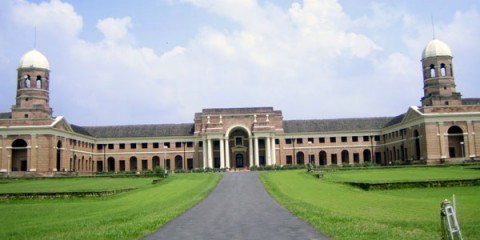
Uttarakhand, North India, Architecture, Caves, Hill station, History, Musuem, Nature, Temple, Wildlife Sanctuary
Dehradun is the capital city of Uttarakhand, India. It is famous for picturesque landscape and natural resources. This place is having historical background. It is believed that this is the birth place of Dronacharya who was the Guru of Pandavas and Kauravas in the epic Mahabharata. This place is also in Ramayana. It is believed that after the death of Ravana, Lord Rama along with Lakshmana visited to this place. Evidences of these are found in the excavations. Best places for shopping lovers are Astely hall, Rajpur Road and Paltan Bazaar.
What to see in Dehradun:
Museum: It is one of the major attractions of the city. This was established in 1971. Origin and development of the city related artefacts can be seen in this museum.
Clock Tower: This was constructed by Britishers before independence. It is six faced tower. Architecture of this tower is so beautiful.
Forest Reserve Institute: Building was constructed in Greco Roman colonial Style. It consists of 6 museums related to entonomy, nonwood forest products, timber, Silviculture, pathology and Social Forestry. This place also has Botanical Garden.
Sahastradhara: It is a beautiful spring. Sulphur present in this spring water. Beautiful views can be enjoyed here. It is believed that this water is having medicinal values.
Mahadev Temple: It is located in Garhi Cantonment area. This temple is dedicated to Lord Shiva. It is a cave temple. It is believed that Lord Shiva made milk flow from the cave for Ashwathma.
Mall Road: This is the best place for shopping lovers. Wide range of products available such as readymade garments, handicrafts, second hand books, ornaments, electronic items, Garwahli shawals, blankets, Tibetan Carpets, traditional jewellery etc.
Waida institute of Himalayan Geology: It consists of huge library consists of several research journals along with best collection of books. To educate the people about general geology and Himalayan; charts, maps and videos are available here.
Paltan Bazaar: This place is famous for wooden crafts items. Fragrances of Basmati Rice and Spices can enjoy at this place.
Other attractions of Dehradun: Other attractions of Dehradun are Ram Rai Gurudwara, Tibetan Buddhist temple, Tapkeshwar Mahadev Temple, Jaspal Rana Shooting Ranges.
What to see around Dehradun:
Chandrabani: It is located 7kms away from Dehradun. People believed that this was the residence place of Maharishi Gautam and his daughter Anjali. It is also believed that Maa Ganga, Daughter of Heaven is manifested here.
Malsi Deer Park: It is located 10kms away from Dehradun. This is the best picnic place for the children. Apart from deers visitors can see Peacocks.
Indian Military Academy: It started functioning from 1st October 1932. Major attractions of this academy are 18 holes FRIMS Golf Course, Shooting Demonstration, War Memorial and Museum. It is located 8kms away from Dehradun.
Mundali: It is located 2.5kms away from Dehradun. This is the best place for Ski Professionals and for snow lovers.
Other attractions near Dehradun: Other attractions near Dehradun are Robbers Cave, Lacchiwalla, Chetwoode Hall, Laxman Siddh Temple, Swarg Niwas Temple.
Getting to Dehradun: Dehradun is well connected with road, railways and airways. From cities such as Ujjain, Varanasi, Kolkata, Chennai, Delhi etc buses and trains come to this place. Flights from Delhi come to this place.
Getting around Dehradun: Autos, Buses, Cars are available to visit the surrounding places of Dehradun.
Best time to visit Dehradun: Dehradun welcomes the visitors throughout the year.
Where to stay in Dehradun: Plenty of accommodations available to stay in Dehradun. Midrange and Luxury hotels provide free pick up services from the airport.
Where to eat in Dehradun: Several eating options available in Dehradun. North Indian dishes are popular in these restaurants. Continental, Chinese and Indian cuisines are available in all the restaurants. Noodles taste at small stalls of this place is unique. Tibetan delicacies are most famous in this city.
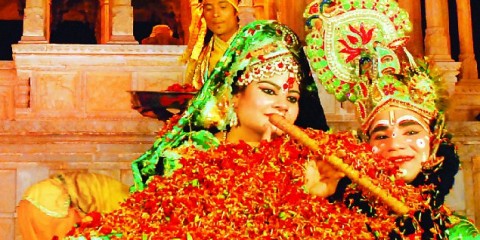
Rajasthan, North India, Architecture, Bundi Utsav, Caves, Fort, History, Miniature Paintings, Palace, Water falls
Bundi is a small city in Rajasthan, India. This place is famous for festivals, Paintings and architecture. City is named after the Meena tribe king Bundi Meena. Earlier name of this city is Bundi Ka Nal. Nal means narrow ways. In Bundi, 50 step wells are located. These are built for the public in 1699. Most beautiful step well is Rani Jiki Barol. Worth buying things in Bundi are miniature paintings and cotton carpets.
What to see in Bundi:
Taragarh Fort: It is the major attraction of Bundi. It is also known as Star Fort. Major attraction of this fort is huge cannon which were named as Garbh Gujam. Fort is in the shape of Horse shoe. Lakes and reservoir situated below the hill. In the fort 3 water tanks are placed. They will never get dry even in the peak summer season.
Chaurasi Khambo Ki Chatri: This is known for 84 pillars which were erected by Rao Anirudh.
Moti Mahal: This was constructed using 80 pounds of gold. Different selected stones are also used in the construction of this mahal. Beautiful mirror work can be seen on the ceiling.
Bundi Palace: This palace is famous for Rajasthani Craftsmanship. Only one of the palaces is open for the public. This part is known as Chitra Shala. Attractions of this Palace are Diwann-e-Aam, Old water clock, Hathi Pol, Naubat Khana, Hazari Pol, and Miniature paintings.
Chitrasala: It is located inside the Garh Palace. Paintings on the walls of this sala display Ras Lila and Ragmala Stories.
Sukh Mahal: It is situated near Jait Sagar Lake. Now it was converted into an irrigation rest house. White marble chhatri placed at the second storey of the Sukh Mahal.
Nawal Sagar Lake: It is located at the centre of the city. It is an artificial lake. Mirror image of the city can be seen in the waters of this lake.
Phool Sagar Lake: It is situated in Phool Mahal Complex. Between November to February this region fills with beautiful migratory birds.
Bundi Utsav: This organises in November- December every year. Thousands of visitors come to this place during this season. Exhibitions, arts & Crafts, fireworks Competition and Painting, Sports, dance and music competitions conducts here.
What to see around Bundi:
Rameshwar: It is located 15kms away from Bundi. This place is famous of Cave temple which was dedicated to Lord Shiva. Waterfalls are the other attraction of this place.
Bijoliya: This place played a major role during the reign of Chauhan rulers. They have constructed 3 Lord Shiva temples in 13th century. It is located 51kms away from Bundi.
Jait Sagar: It is located 3kms away from Bundi. This is full of lotus flowers. It was surrounded with huge wall and 4 gateways.
Shikar Burj: It is one of the major attractions near Bundi. It is located 4kms away from Bundi city situated in Bundi Forests. Earlier this was old hunting cottage but now this was converted into picnic spot.
Getting to Bundi: Bundi is well connected with road ways. From all the cities of Rajasthan, private and state run buses come to this place. Nearest railway head is located at Kota. From Udaipur, Ratlam, Kolkata, Delhi, Ajmer trains halt at this station. Taxis are available from railway station to reach Bundi. Nearest airport is located at Jaipur which is 215kms away from Bundi. Taxis are available to reach Bundi.
Getting around Bundi: City can be explored on foot or by auto rickshaw. Buses and Taxis are available to visit the surrounding places of Bundi.
Best time to visit Bundi: Best time to visit Bundi is between August to March.
Where to stay in Bundi: Plenty of accommodations are available to stay in Bundi including luxurious hotels. Luxury hotels provide Rajput hospitality.
Where to eat in Bundi: Plenty of restaurants available to eat in Bundi. Continental, Chinese and Indian food is available in the restaurant.
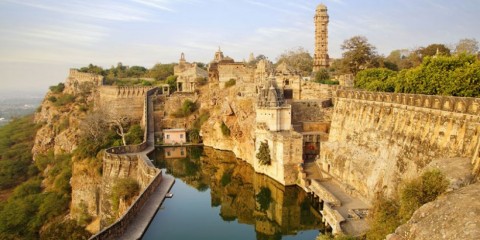
Rajasthan, North India, Architecture, Fort, History, Musuem, Nature, Palace, Temple, Wildlife Sanctuary
Chittorgarh is a city in Rajasthan, India. Major attraction of this place is Chittorgarh Fort which is the largest fort in India. It was built in 7th century by Mauryans. This fort was sacked for 3 times between 15th and 16th centuries. In the history of fort, siege by Ala-ud-din Khilji is an important event. Fort is the pride of Rajputs. From 8th century to 16th century Kingdom of Mewar ruled this place. Area occupied by this fort is 700 acres. It stands on 180m high hill. Jewellery, Leather shoes, handmade shoes, fabrics, metal works are worth buying in Chittorgarh city. Jauhar Mela is the biggest festival celebrates in this city.
What to see in Chittorgarh:
Chittorgarh Fort: Other name of this fort is water fort. It is the major attraction of Chittorgarh. Worth seeing in this fort are Vijay Stambh, Kirti Stambh, gates namely Hanuman Pol and Ram Pol. Several temples are located inside the fort. They are Kalika Mata Temple, Shyam Temple, Meera Temple, Neelkanth Mahadev Temple. These temples belong to 8th century. This fort is having 22 water bodies.
Rana Kumbha Palace: It is located inside the fort. It was built by Rana Kumbha in 1433- 68. Worth seeing in this palace are stables of horses, elephants and balconies. Ganesha temple is also located inside the palace.
Rani Padmini’s Palace: This is 3 storied white building situated inside the fort. Pavilion and lotus temple are located here.
Archaeological museum: Sculptures, houses paintings, artifacts are the major attractions of the museum. Historical facts of ruins of the fort also can be seen here. During the excavation, artefacts belongs to Buddhism are found. These artefacts also can be seen in the museum.
Other attractions in Chittorgarh: Other attractions in Chittorgarh are Phatta’s Memorial, Vijaya Stambh, Kalika Mata Temple, Tulja Bhawani Temple, Meera Temple, Gaumukh Reservoir,
What to see around Chittorgarh:
Sitamata Wild life Sanctuary: It is believed that Sitamata stayed in this forest in Saint Valmiki Ashram so it was named after this. Major attractions of this sanctuary are wild Pangolin, leopards, jungle cat, nilgai, deer etc. It is locate 31kms away from Chittorgarh.
Sanwariyaji Temple: It is located 38kms away from the city. Lord Vishnu worshipped here.
Bassi fort: It is located 54kms away from the city. Major attractions of this fort are Mahals, arches, domes and gates. This was built in 16th century by Thakur Jimal who was the cousin of Maharana Pratap .
Nagari: It is located 18kms away from the city. During the excavation a stupa was discovered decorated with terracotta tiles. This was the flourishing town during Gupta and Mughal rulers.
Other attractions near Chittorgarh: Other attractions near Chittorgarh are Bassi Wildlife sanctuary, Menal, Bhainsrodgarh Wildlife sanctuary, Maha Sati, Sanwariaji Temple, Sathis Deori Temple.
Getting to Chittorgarh: Chitttorgarh is well connected through road and railways. From the cities of Rajasthan, buses come to this place. From Vadodara, New Delhi, Udaipur, Ajmer, Jaipur trains halt at Chittorgarh. Nearest airport is at Udaipur. This airport is popularly known as Maharana Pratap airport. This airport is well connected with New Delhi and Jaipur.
Getting around Chittorgarh: Buses, Taxis and Private Vehicles are available to visit the surrounding places of Chittorgarh.
Best time to visit Chittorgarh: Best time to visit this place is during the winter season. Climate is so pleasant during this season.
Where to stay in Chittorgarh: Plenty of accommodations are available to stay in Chittorgarh. All type of hotels such as budget, midrange and luxury hotels are available.
Where to eat in Chittorgarh: Plenty of restaurants available to eat in Chittorgarh. All the restaurants provide traditional Rajasthani meals along with Continental and Chinese cuisines. Few hotels offer Mughal Cuisines. Almost all the hotels serve only vegetarian food.
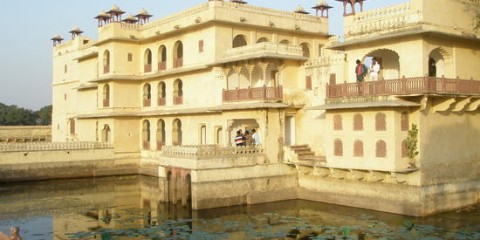
Rajasthan, North India, Architecture, Dussehra, Fort, History, Musuem, Nature, Palace, Rock Formations, Temple, Water falls, Wildlife Sanctuary
Kota is the third largest city of Rajasthan, India. This place is famous for gardens and Palaces. It is located on the banks of Chambal River. Kotya Bhill warrior laid the foundation stone for the construction of this city. Dussehra festival celebrates so grandly in Kota. This city has its own style in celebrating this festival. Main attraction of this festival is burning of effigies of Meghnath, Kumbhakaran and Ravana. Other festival celebrates grandly at this place is Ganguar festival. Grand procession takes place during this festival. Procession includes horses, camels, elephants, drummers and dancers.
What to see in Kota:
City Fort Palace: In Rajasthan it is one of the largest forts. Visitors can see Rajput and Mughal architectural style on this fort. Ceilings are made up of glass and marble are used for the walls as well as for the floors. Palace consists of a museum. This displays the weapons used during the Rajput era were displayed. Major attraction of this fort is Elephant Gate which was built in 17th century.
Chambal Garden: It is located on the banks of river Chambal. This is the best picnic spot. Inside the garden, visitors can find a pond. Major attractions of this pond are gharials and crocodiles.
Kishore Sagar Lake and Jagmandir Palace: It is an artificial lake which was built in 1346 by Prince Dher Dun of Bundi. At the middle of the lake visitors can find a Palace which was built in 1740. This palace was constructed with red sandstone.
Maharao Madho Singh Museum: This is one of the best museums in Rajasthan. It was named after first king of Kota i.e. Rao Madho Singh. Major attraction of this museum is arms, sculptures, miniature paintings of Kota school.
Umed Bhawan Palace: It is located in the cantonment area of Kota. This was built by Maharaja Umed Singh in 1800. Now this palace is acting as heritage hotel.
Darrah Wildlife Sanctuary: It was established in 1955. Kota Kings used this area for hunting purpose. Major attraction of this place is deer, Tiger, Rhinos, wolves, nilgai etc
Other attractions in Kota: Other attractions in Kota are Sawan Phuhar Water Park, Brijraj Bhawan Palace, Godavari Dham Temple, Kansua Temple, Haveli Devtaji, Mathuradheesh Mandir, Gurudwara Azamgarh Sahib.
What to see around Kota:
Kaithoon: It is located 14kms away from Kota. This place is famous for hand woven Kota Daria Saris. Here dress material and fabrics embroider with real gold and silver threads can be seen.
Baroli: It is located 45kms away from Kota. Major attraction of this place is Ghateshwara Temple. It is one of the beautiful temple complexes in Rajasthan. Carvings on the temple are so attractive. Pillars, images of Lord Shiva, Nataraja are the best example for Rajasthani craftsmanship.
Other attractions near Kota: Other attractions near Kota are Taragarh Fort, Sitabari, Alnea, Raniji Ki Baoli, Garadia Mahadev, Gaipernath.
Getting to Kota: Kota is well connected with Road and Railway lines. From Ajmer, Bikaner, Jaipur, Udaipur etc buses come to Kota. From Pune, Chennai, Kolkata, Delhi, Jaipur, Mumbai etc trains halt at this station. Nearest airport is at Jaipur which is 245kms away from Kota. This airport is well connected with Kolkata, Delhi and Mumbai. Taxis are available to reach Kota from this airport.
Getting around Kota: Buses, Cycle rickshaws and Autos are available to see the city. Buses and Taxis are available to visit the surrounding places of Kota.
Best time to visit Kota: Best time to visit this place is between November to February.
Where to stay in Kota: Plenty of accommodations are available to stay in Kota. But only Budget and midrange hotels are available. During the winter season i.e. festival season tourists rush is more so advance booking of rooms is advisable.
Where to eat in Kota: Plenty of hotels are available to eat in Kota. Most of the restaurants serve vegetarian and Rajasthani cuisines.

Architecture, Buddhist Monestery, Caves, Rock Cut Temples

Adventurous sports, Architecture, Fort, History, Mountain Passes, Nature, Temple, Valley, Water falls, Wildlife Sanctuary

Architecture, Fort, History, Mughal, Temple

Architecture, Boating, Caves, History, Jyothirlinga, Mahabharata, Shakti peethas, Temple

Architecture, History, Temple

Architecture, Caves, History, Jyothirlinga, Temple, Wildlife Sanctuary

Architecture, Temple

Architecture, Camal Safari, Fort, History, Miniature Paintings, Nature, Palace, Temple

Adventurous sports, Architecture, Buddhist Monestery, Buddhist Stupas, Buddhist temples, Nature, Trekking, Valley, Wildlife Sanctuary

Architecture, Fort, History, Mughal, Musuem, Palace, Temple, Wildlife Sanctuary

Architecture, Fort, History, Musuem, Nature, Temple

Architecture, Fort, History, Musuem, Nature, Palace, Temple, Wildlife Sanctuary

Architecture, Camal Safari, Fort, History, Musuem, Nature, Palace, Sand Dunes, Temple, Wildlife Sanctuary

7 Wonders, Architecture, Fort, History, Mughal, Nature, Palace, Shah Jahan, Temple, Tomb

Architecture, Fort, Havelis, History, Masjid, Musuem, Nature, Palace, Temple

Architecture, Fort, History, Mughal, Musuem, Nature, Palace, Tomb, Wildlife Sanctuary

Architecture, Fort, History, Musuem, Palace, Temple, Tomb, Water Sports

Architecture, Buddhist Monestery, Buddhist Stupas, Camal Safari, Hot Springs, Nature, Orchards, Sand Dunes
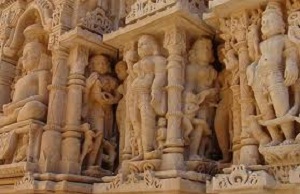
Architecture, History, Jeep Safari, Nature, Temple

Architecture, Masjid, Musuem, Nature, Palace, Temple, Tomb, Wildlife Sanctuary

Architecture, Hill Station, History, Musuem, Nature, Temple, Trekking, Valley, Wildlife Sanctuary

Architecture, History, Mahabharata, Nature, Temple

Architecture, Hill Station, History, Mountain Passes, Musuem, Temple, Trekking

Architecture, Caves, Hill Station, History, Musuem, Nature, Temple, Wildlife Sanctuary

Architecture, Bundi Utsav, Caves, Fort, History, Miniature Paintings, Palace, Water falls

Architecture, Fort, History, Musuem, Nature, Palace, Temple, Wildlife Sanctuary

Architecture, Fort, History, Musuem, Nature, Palace, Rock Formations, Temple, Water falls, Wildlife Sanctuary
